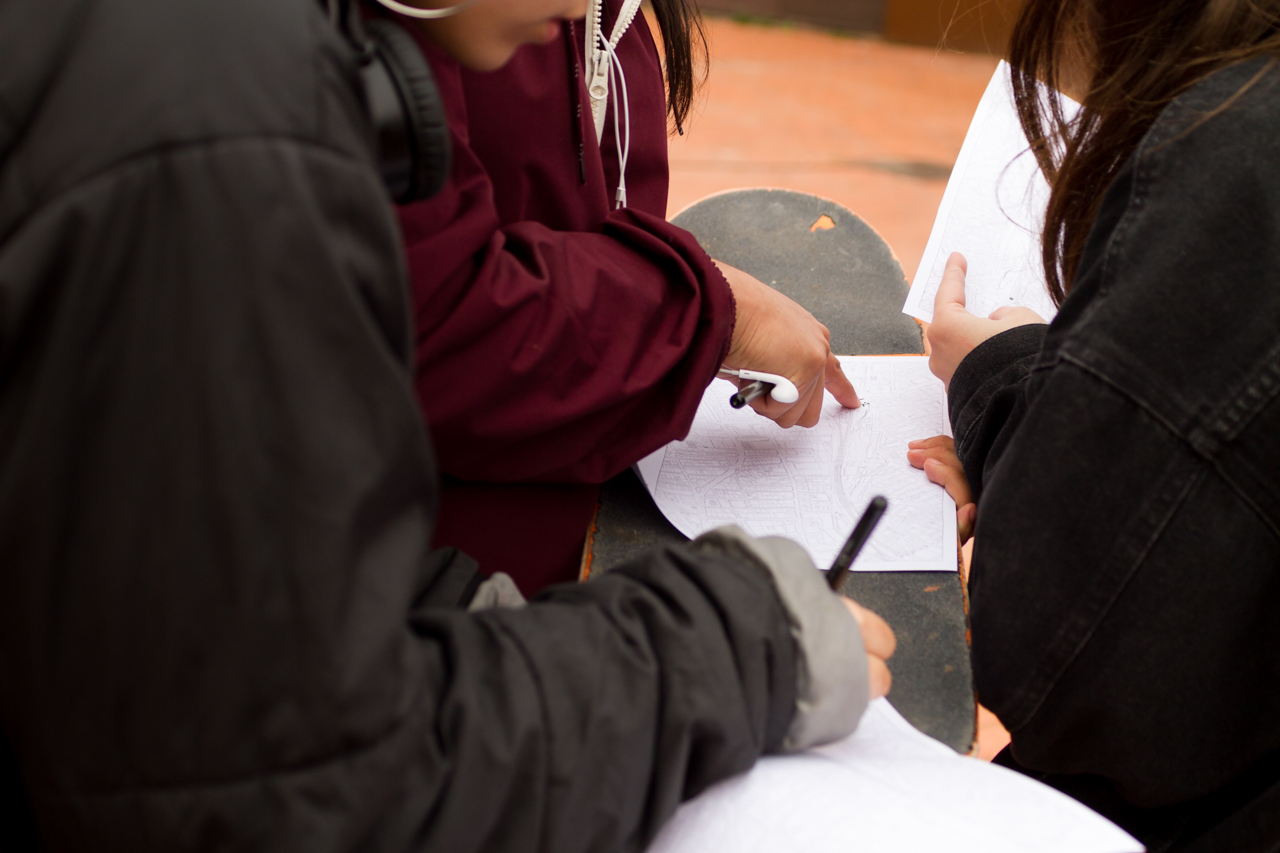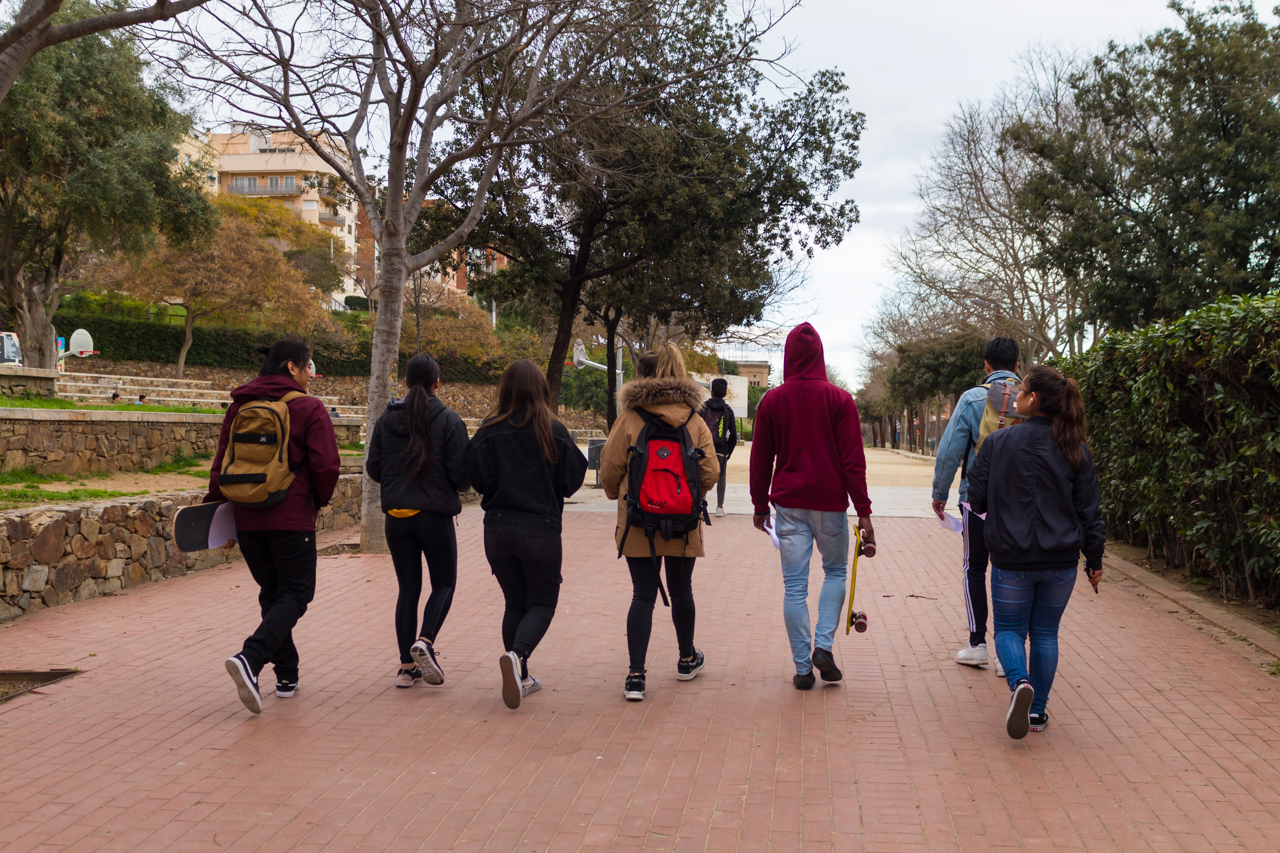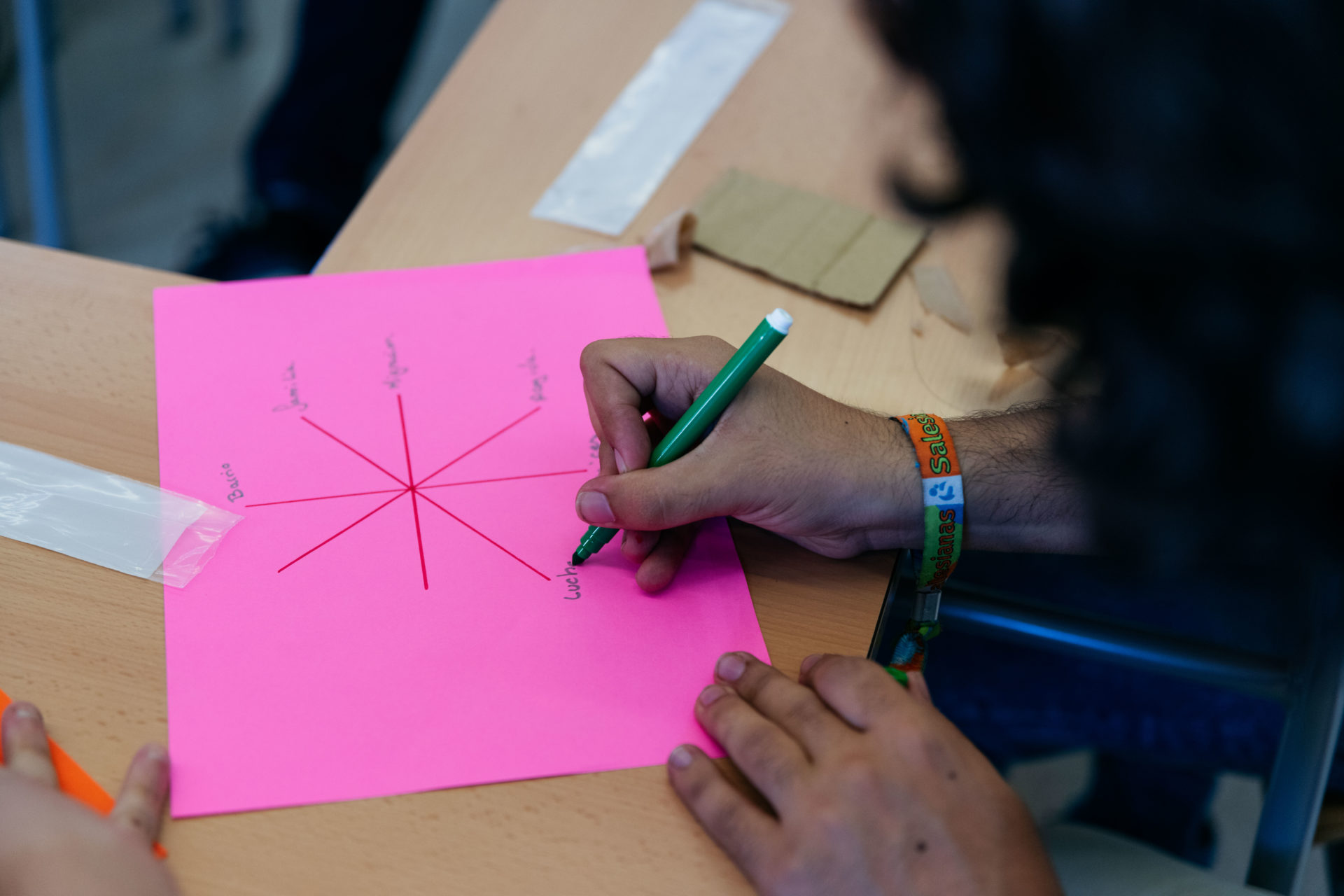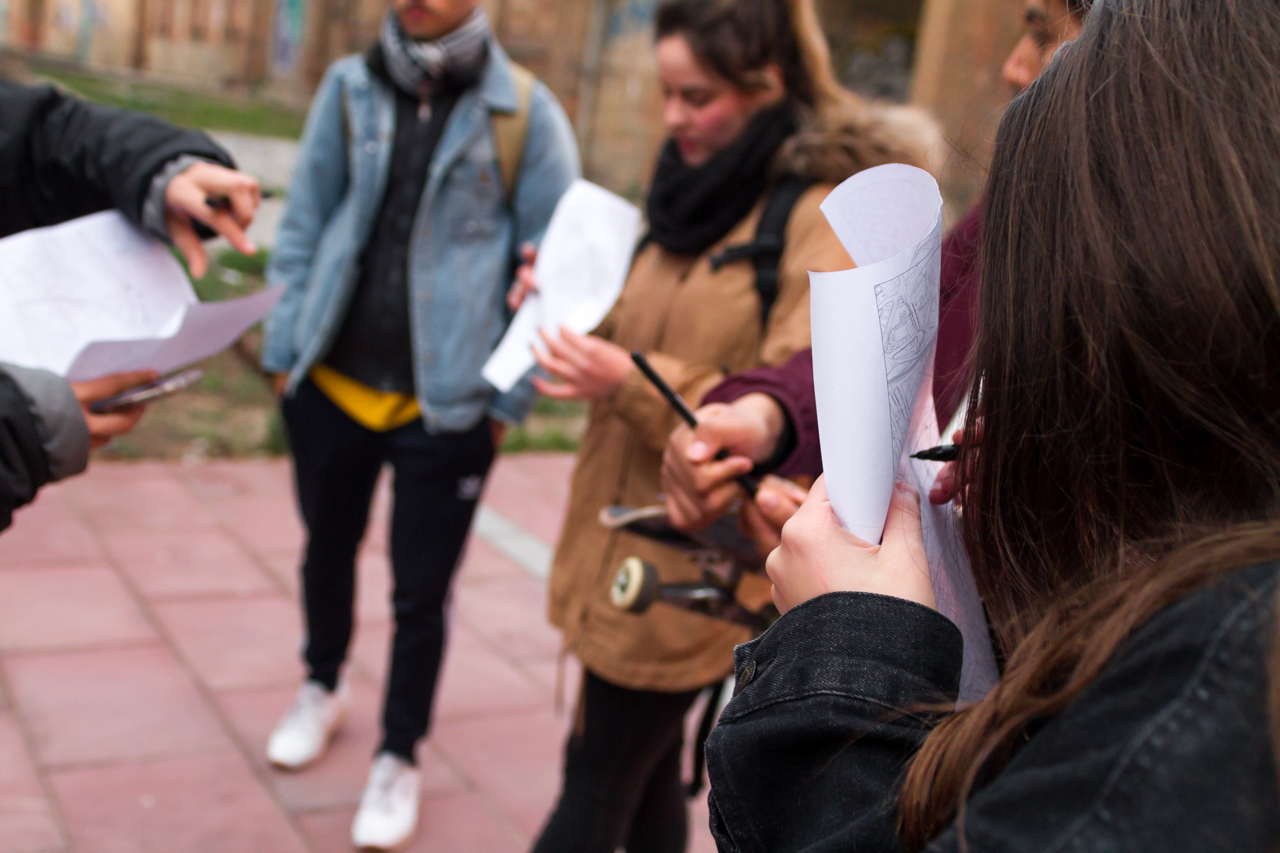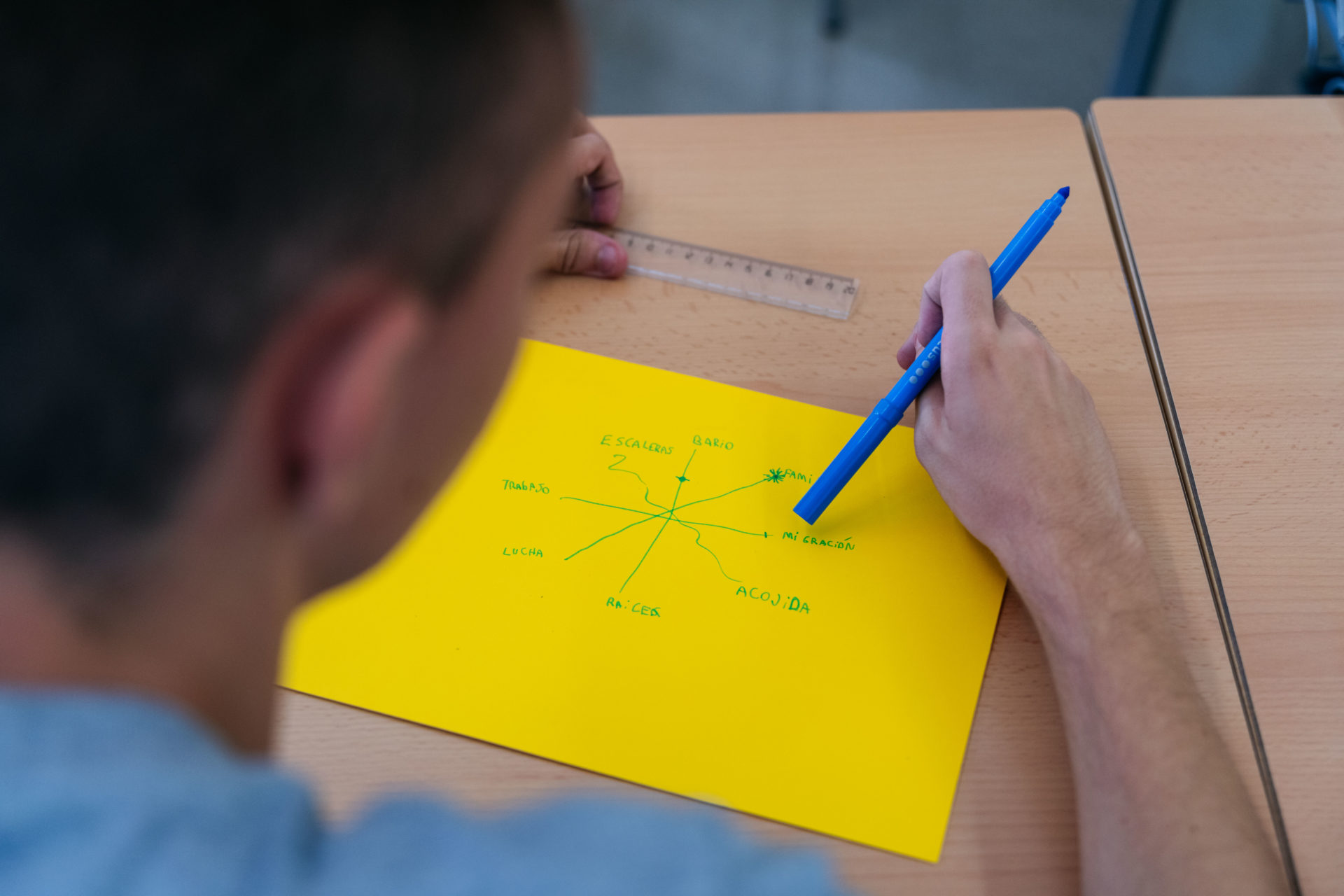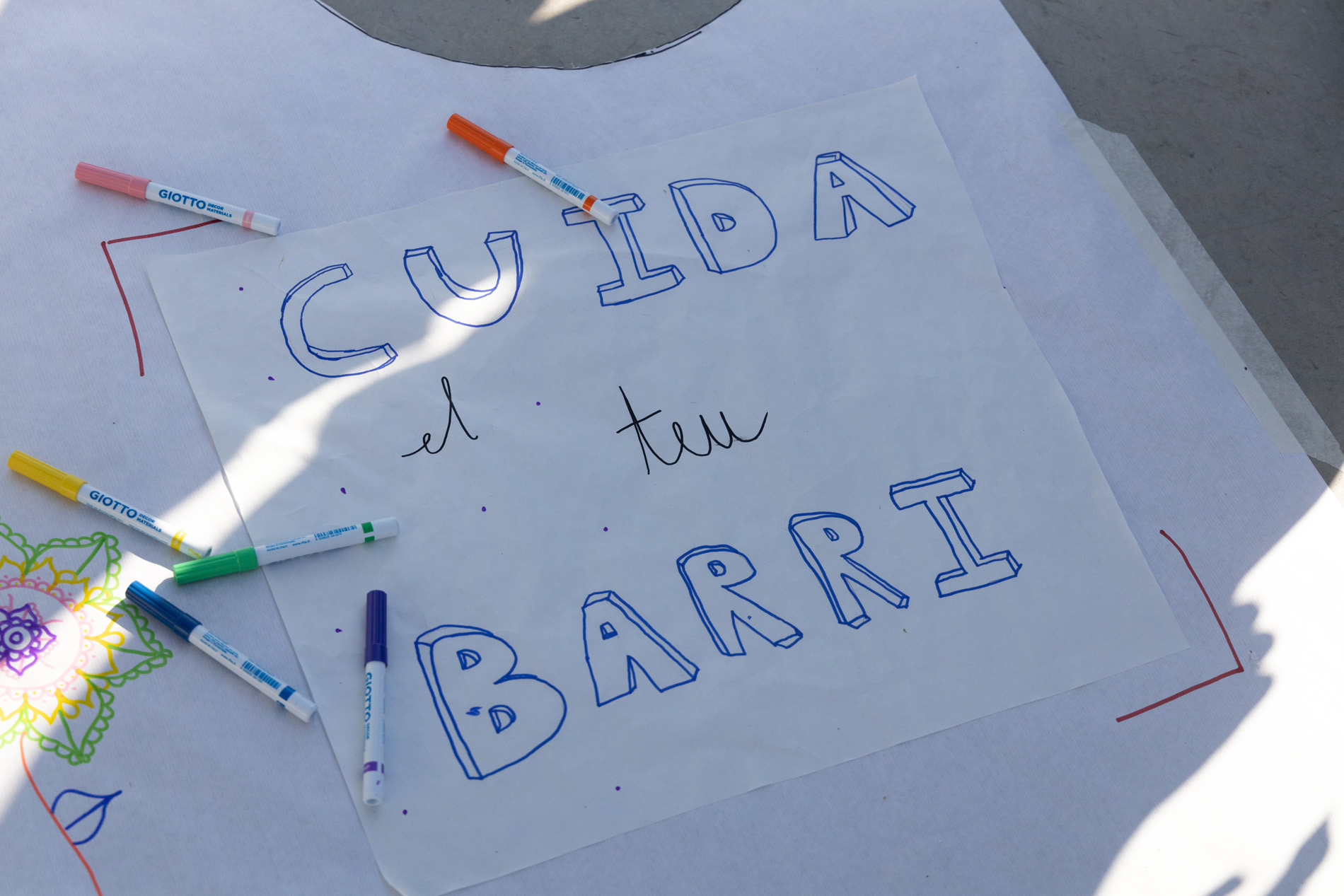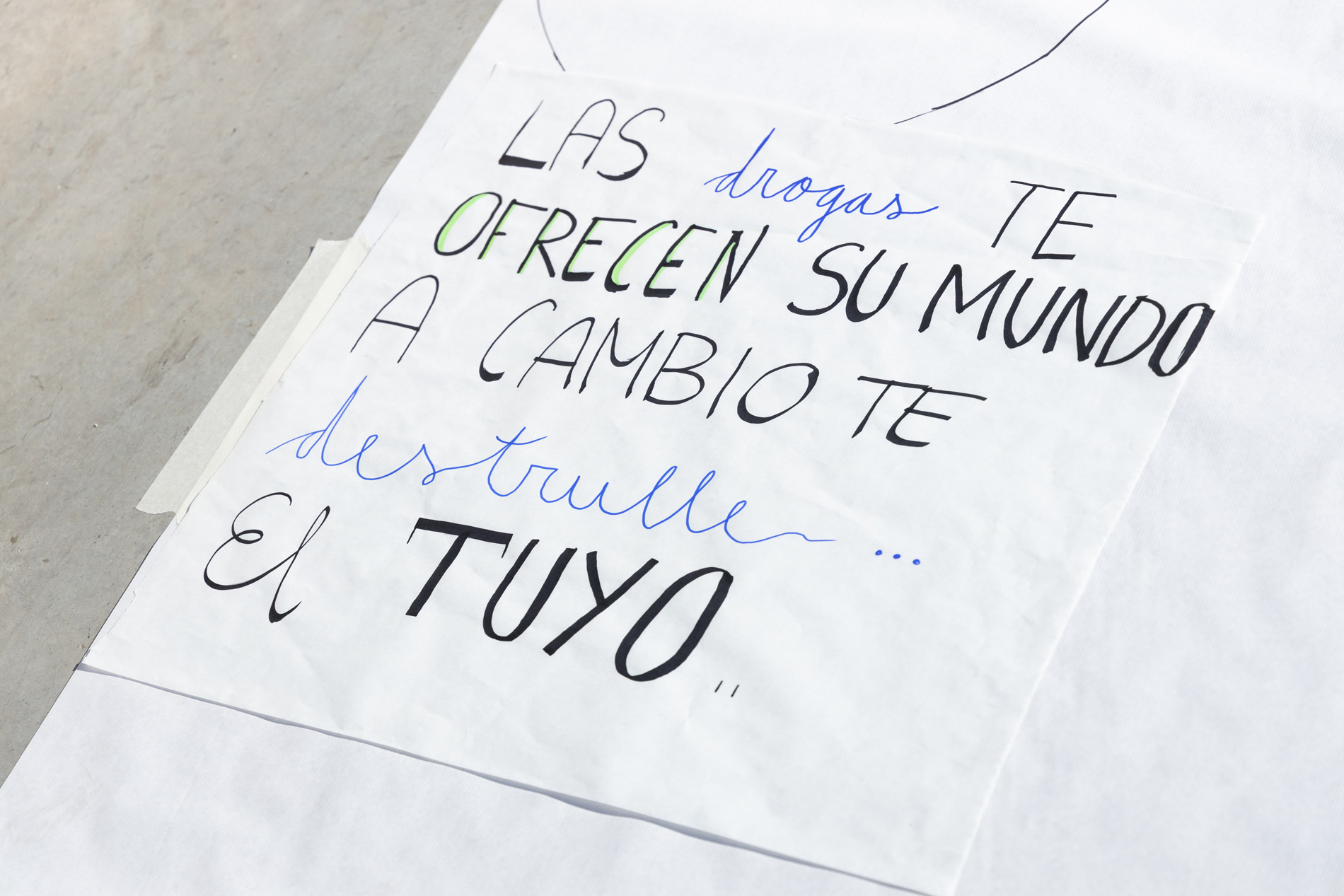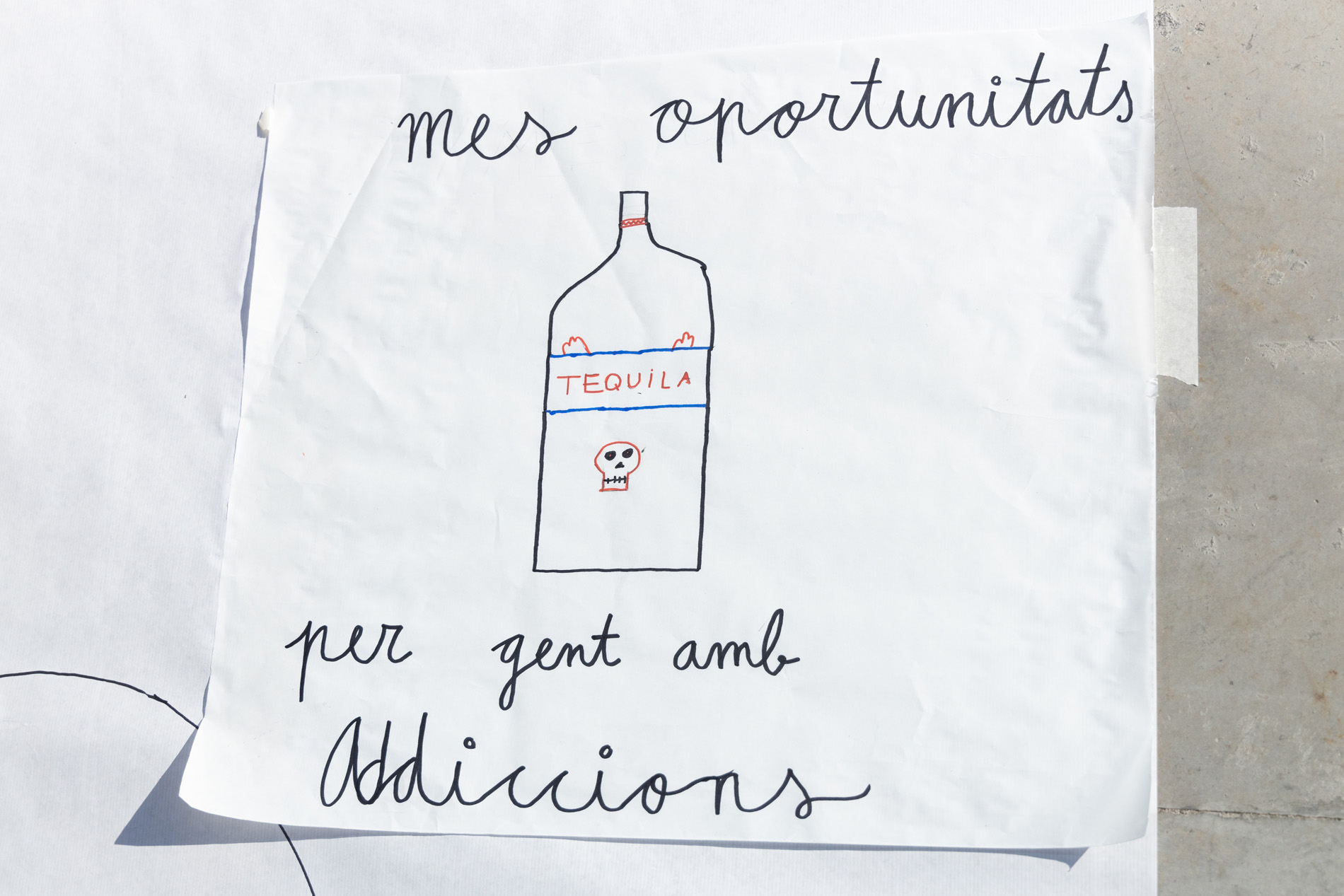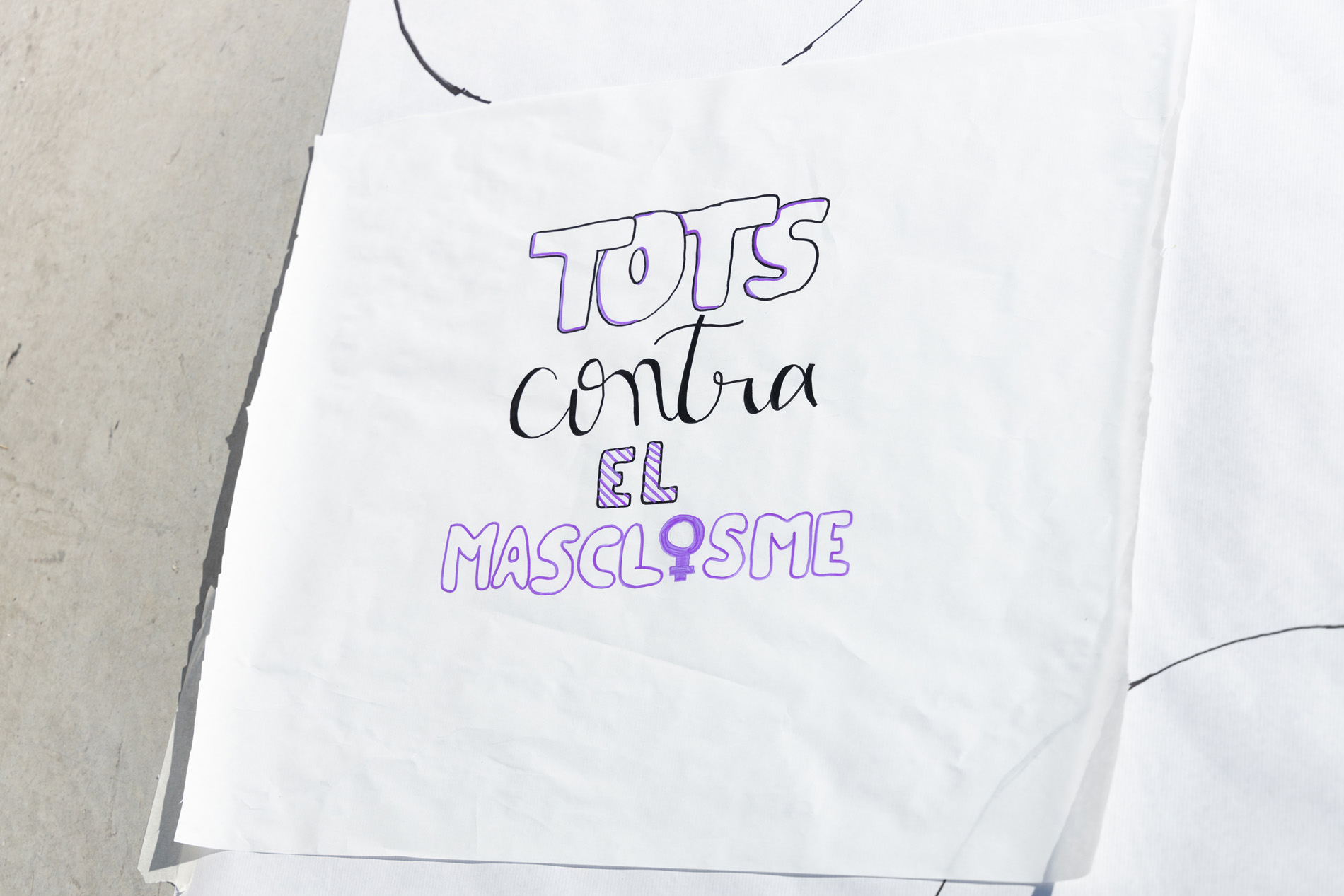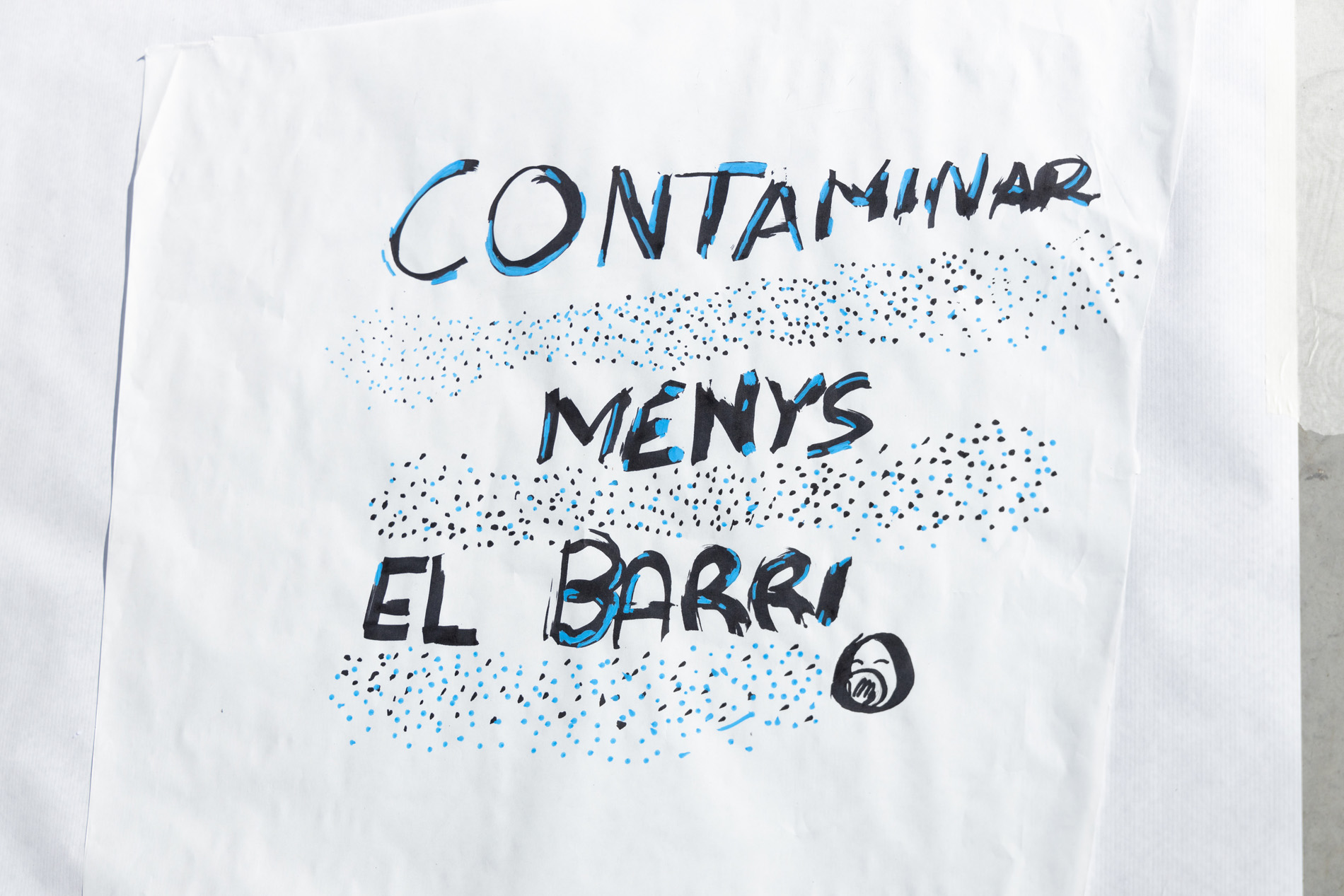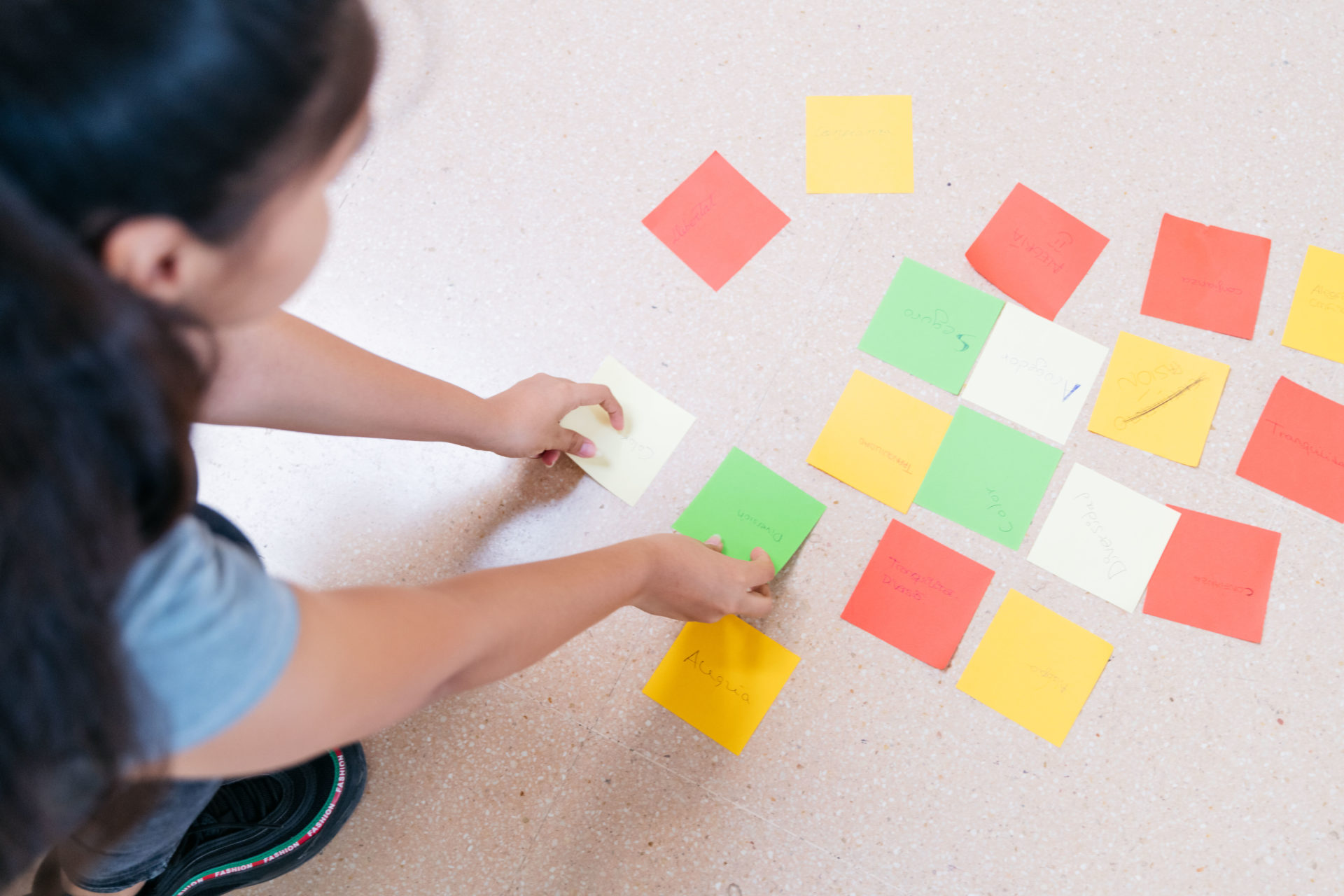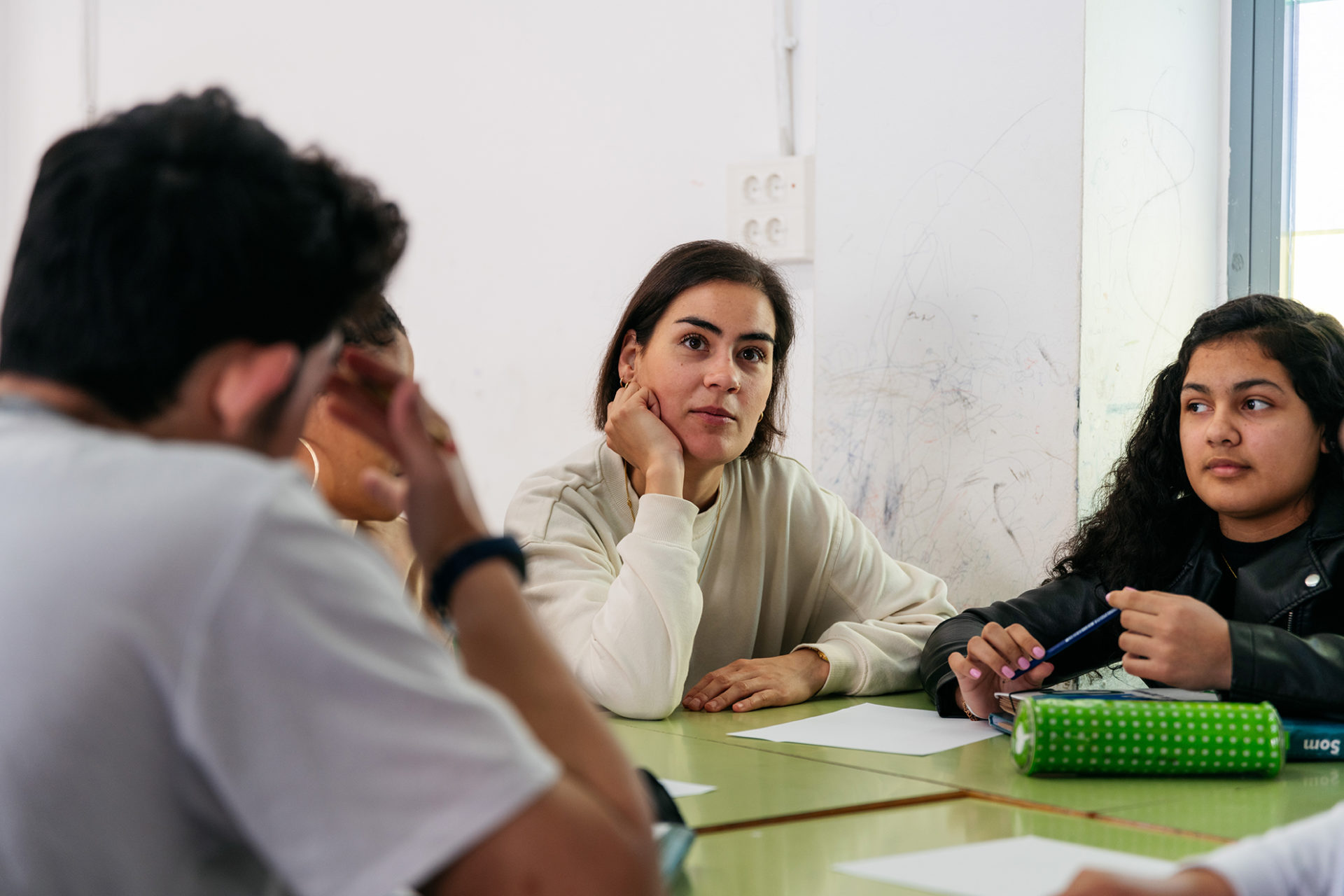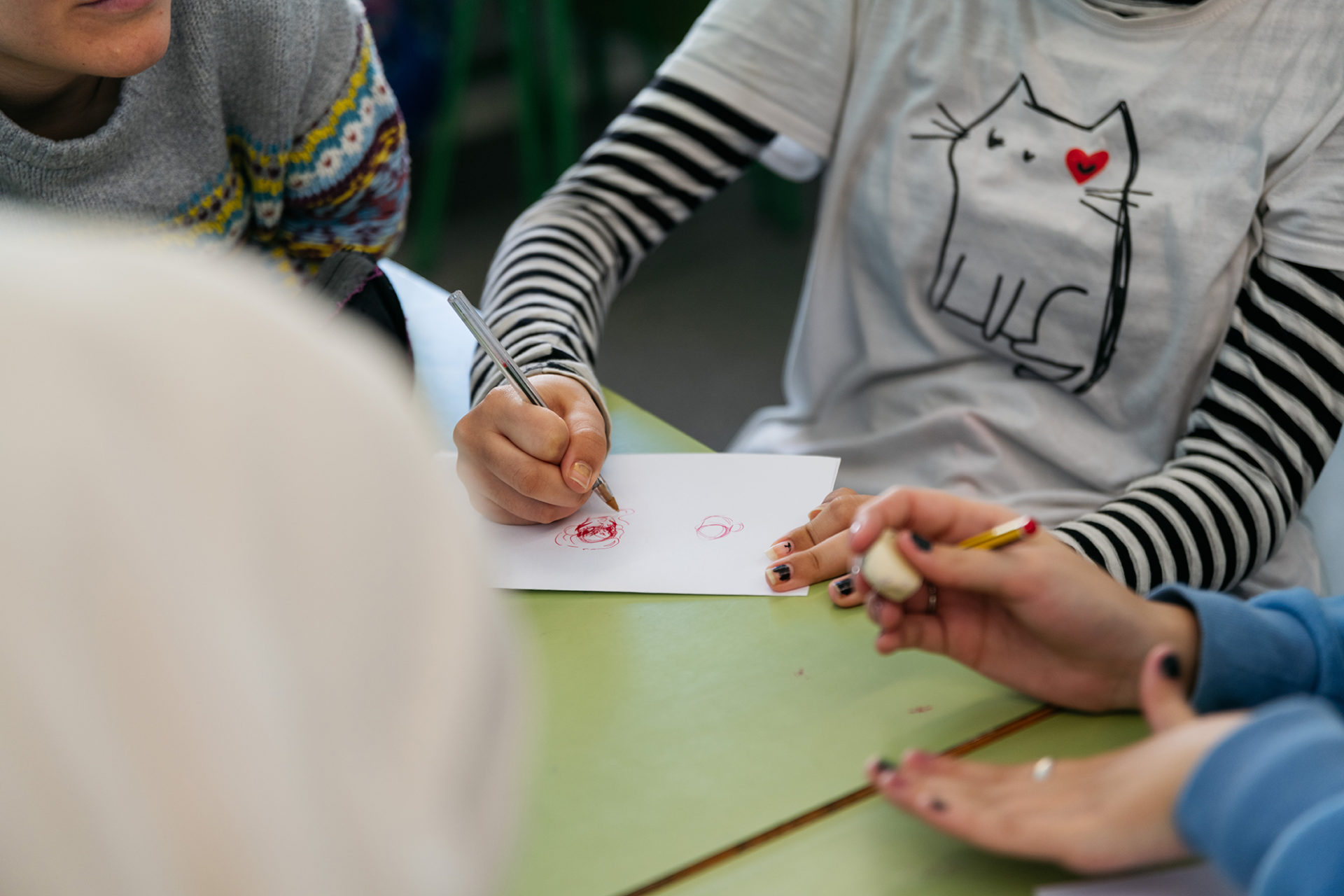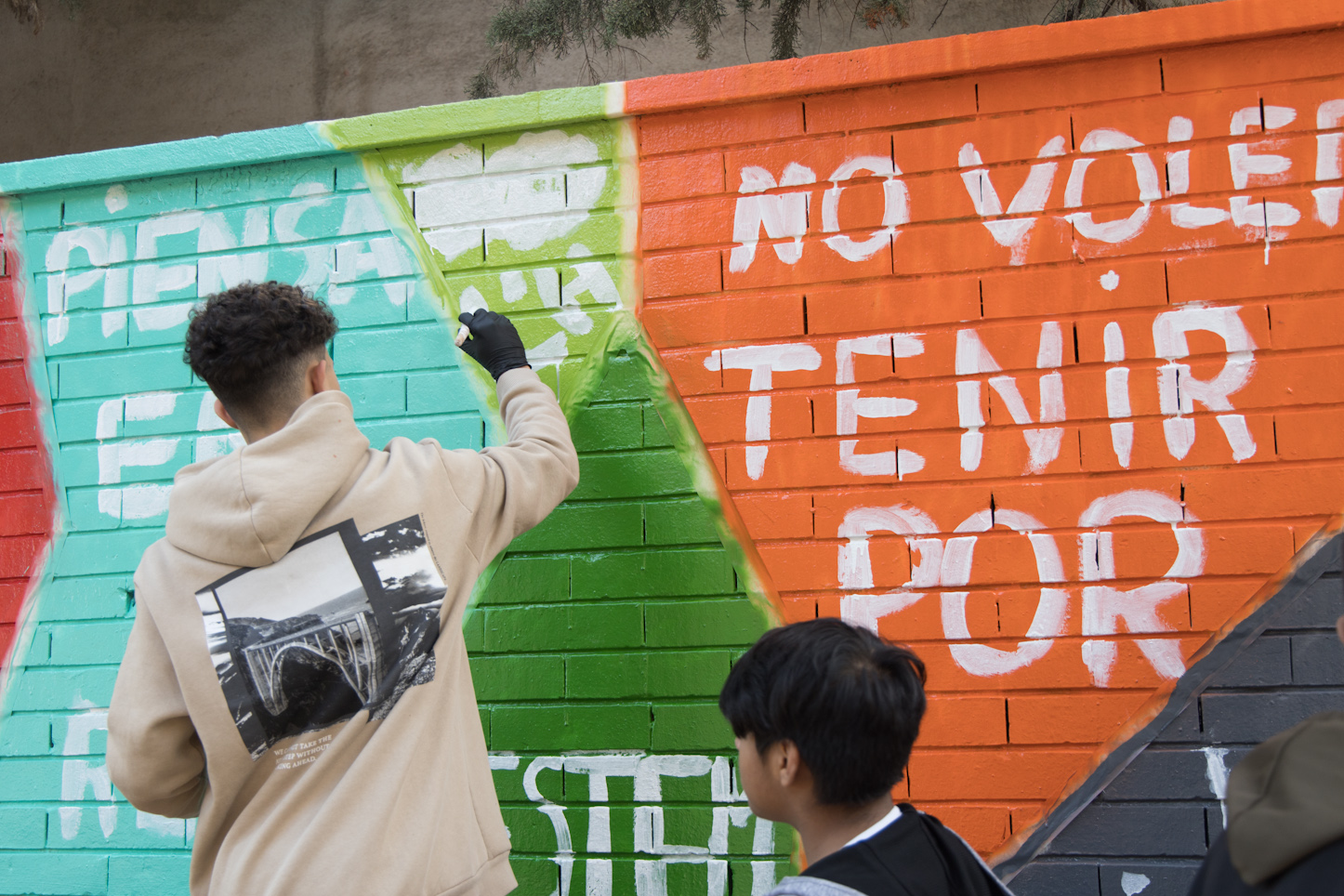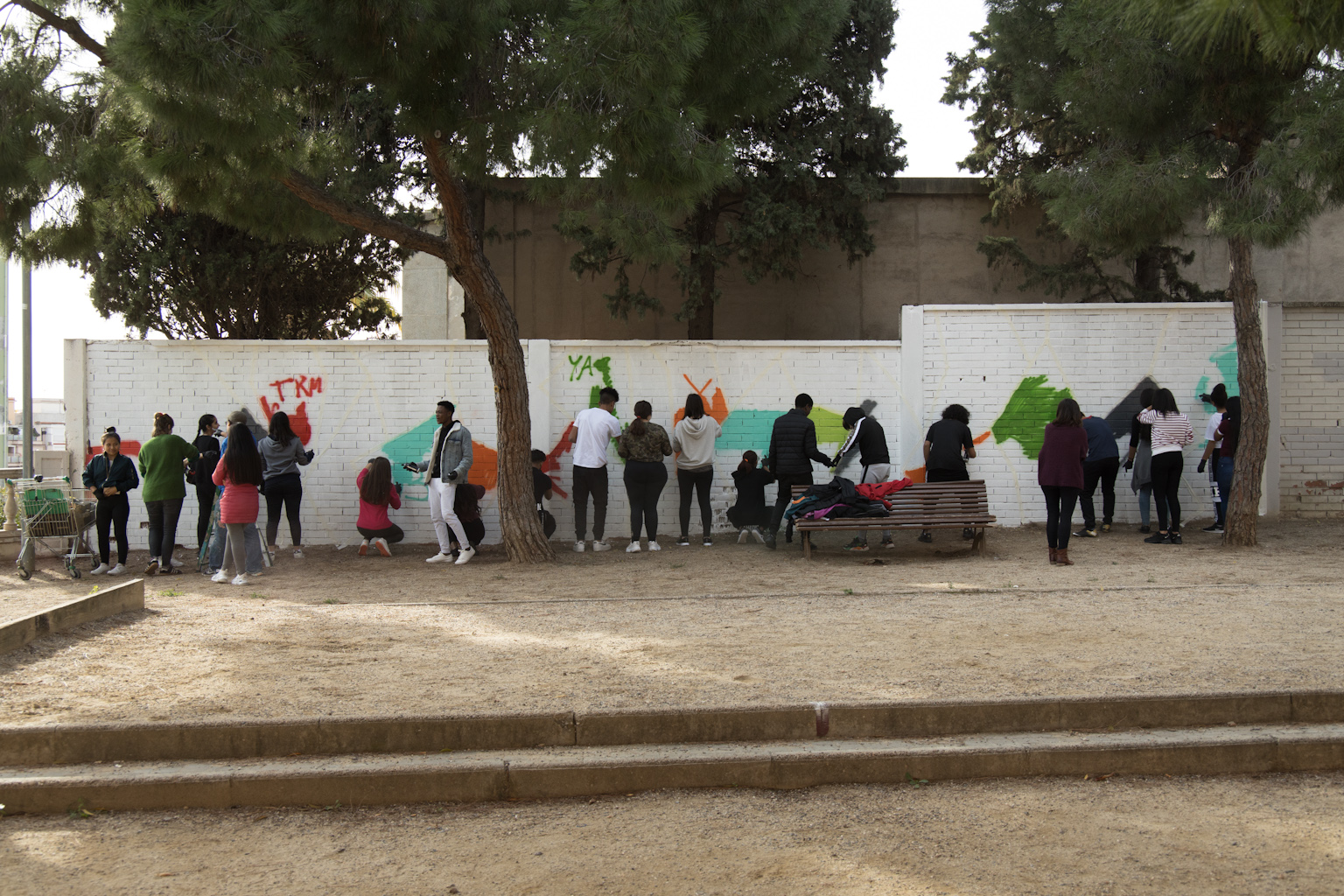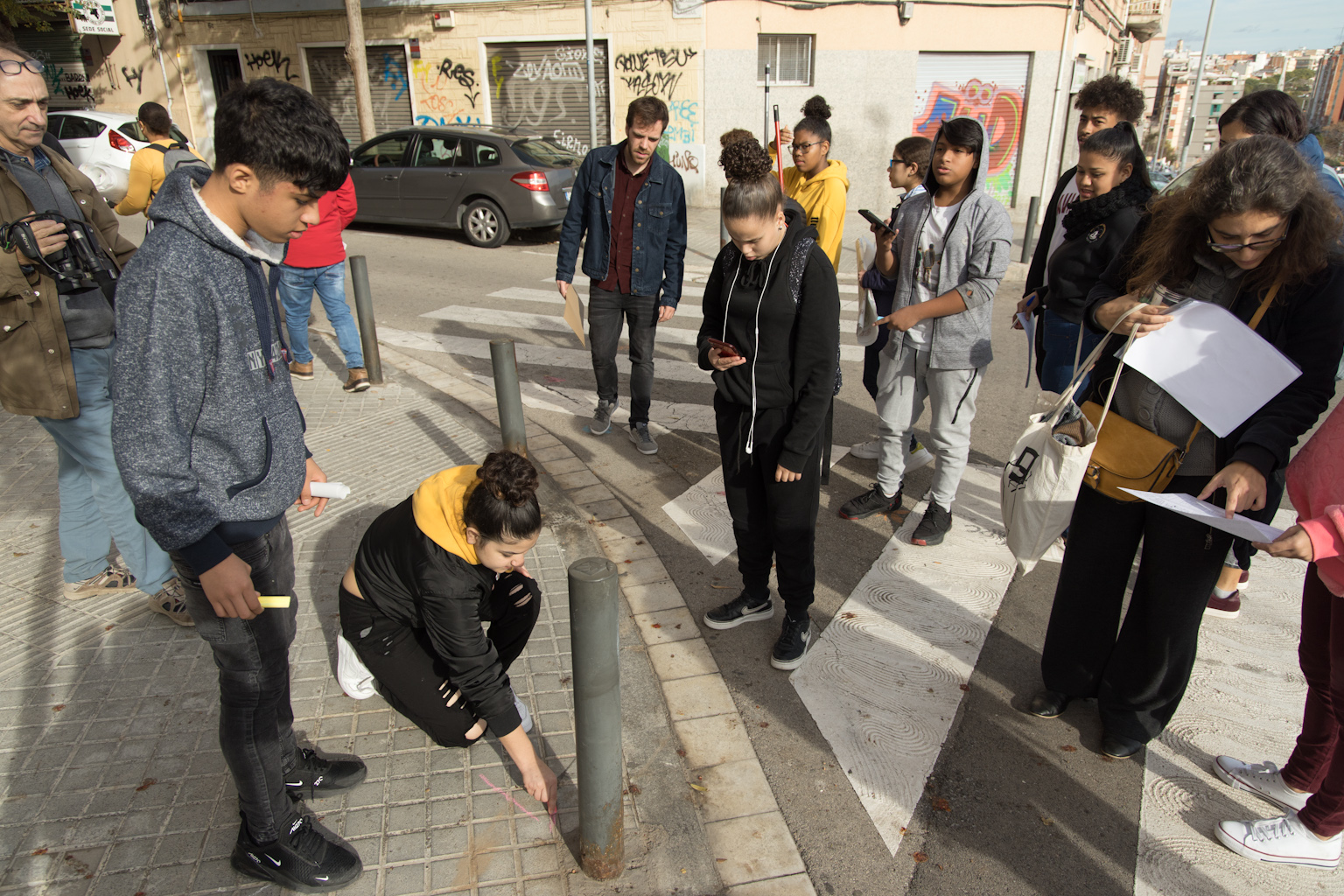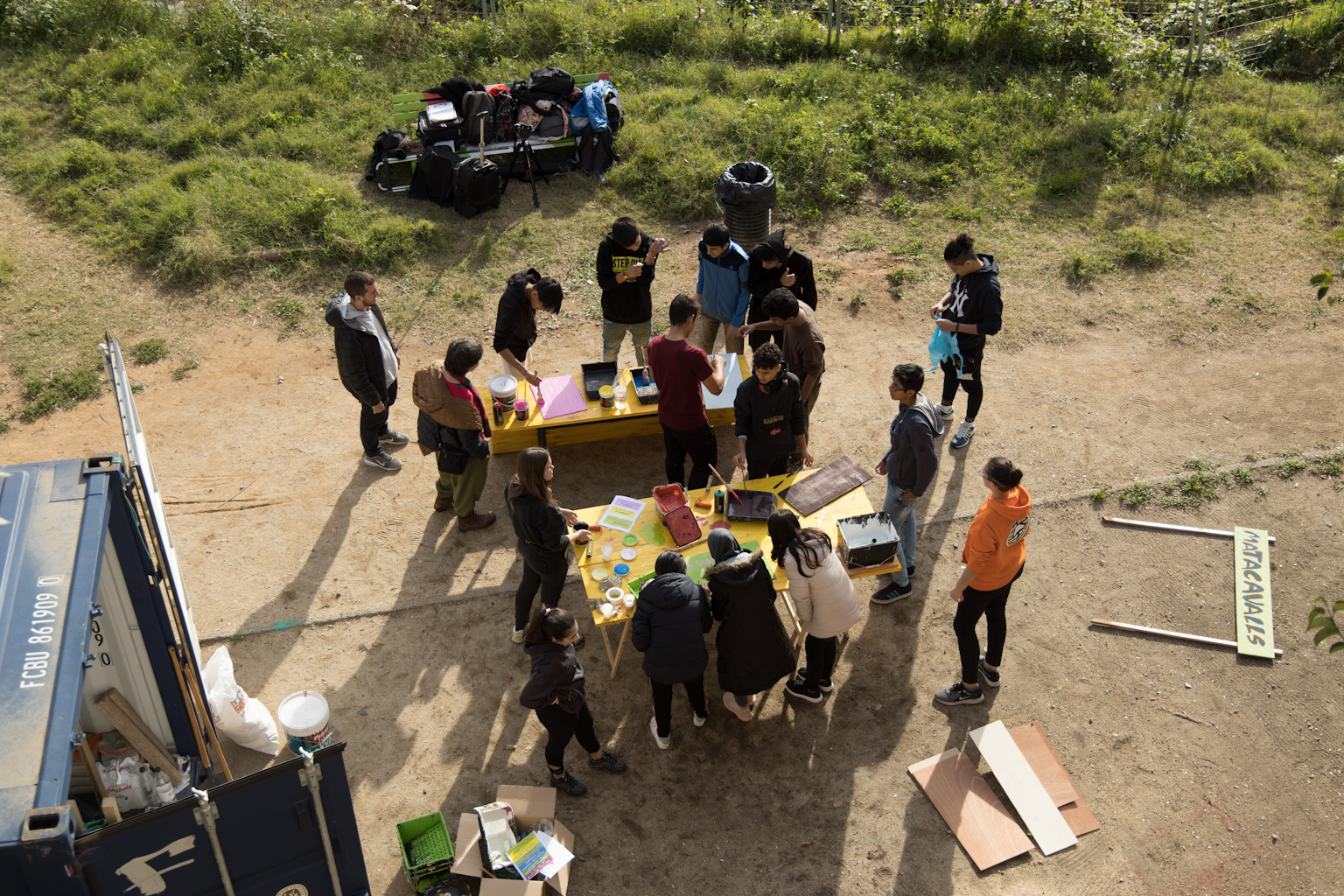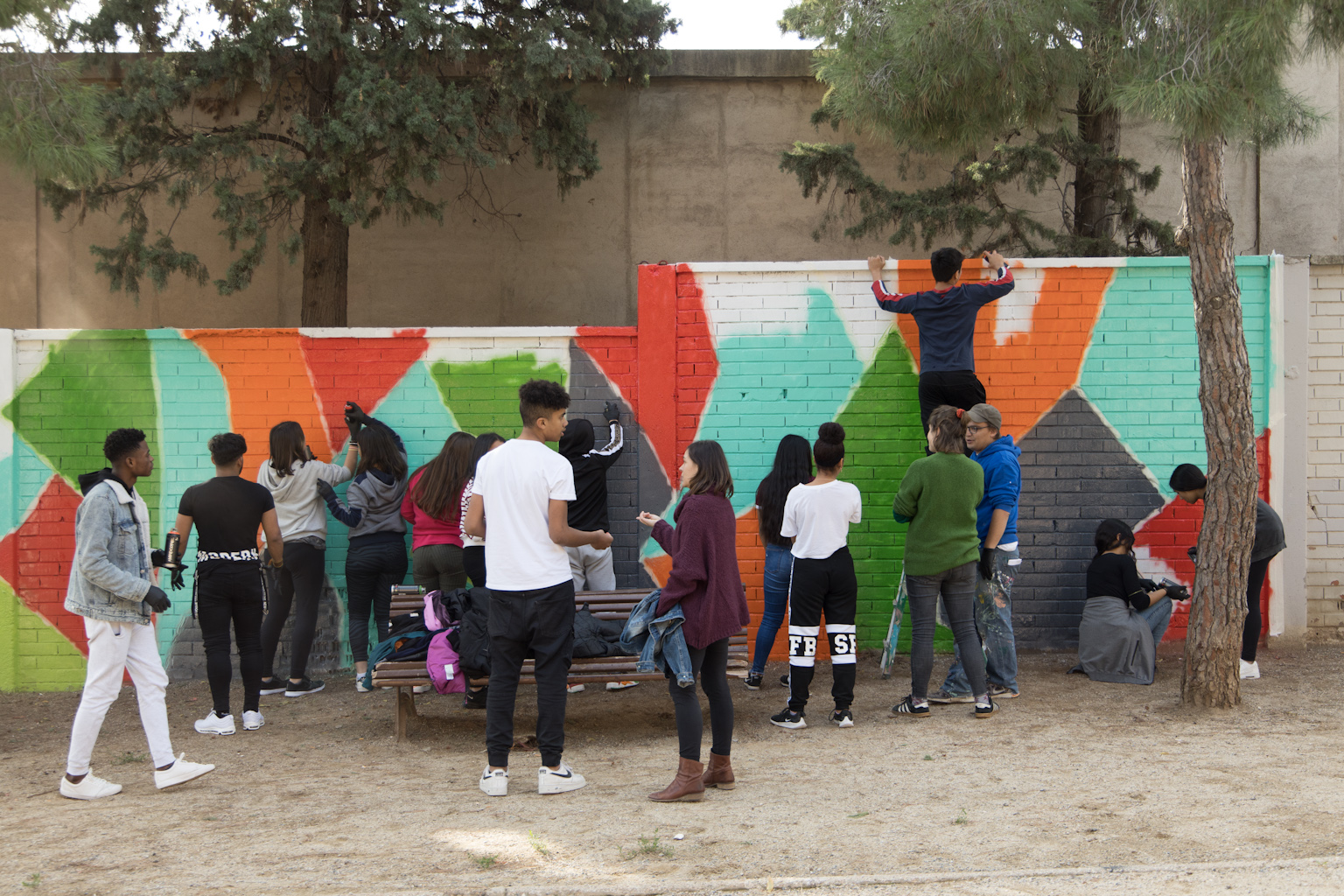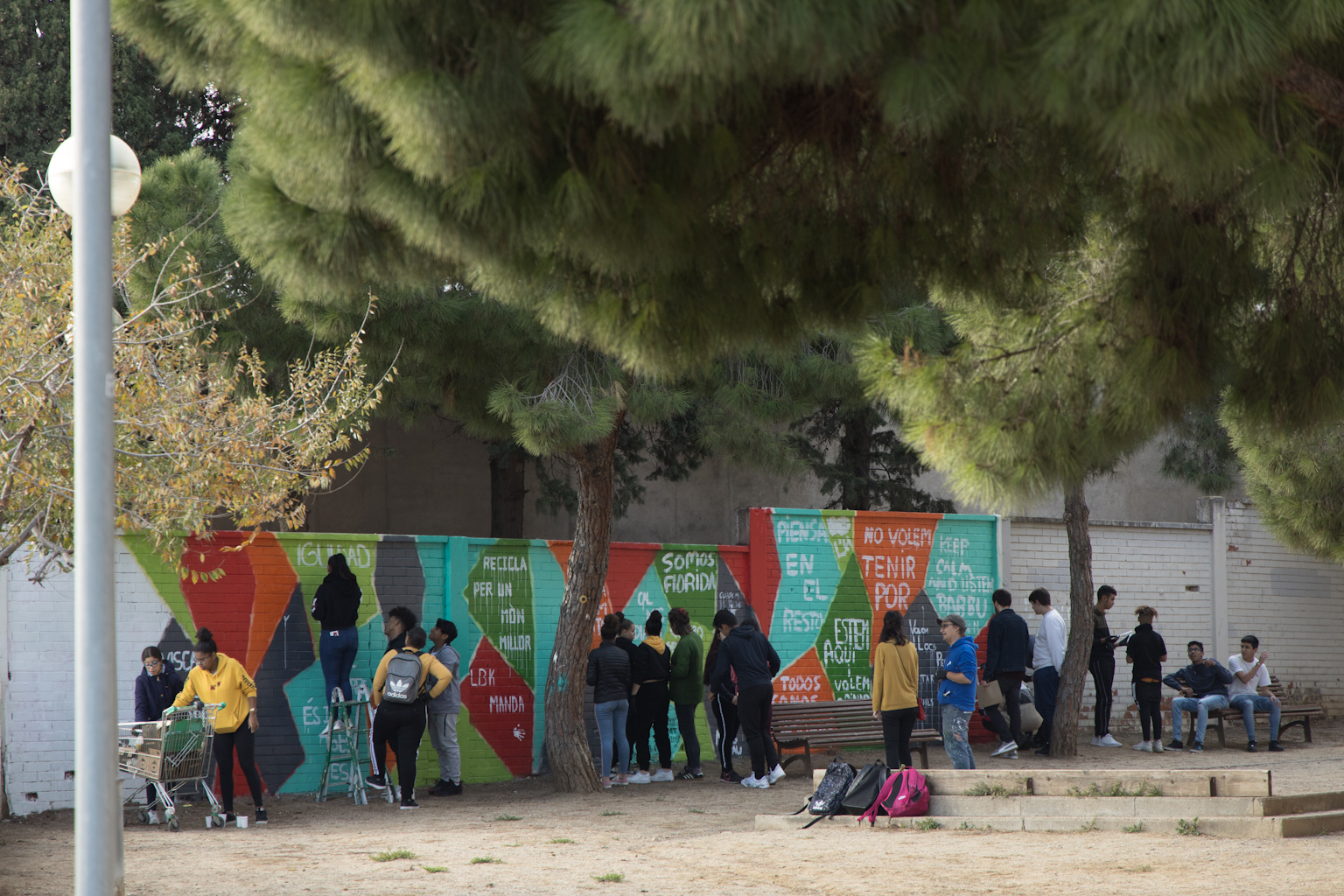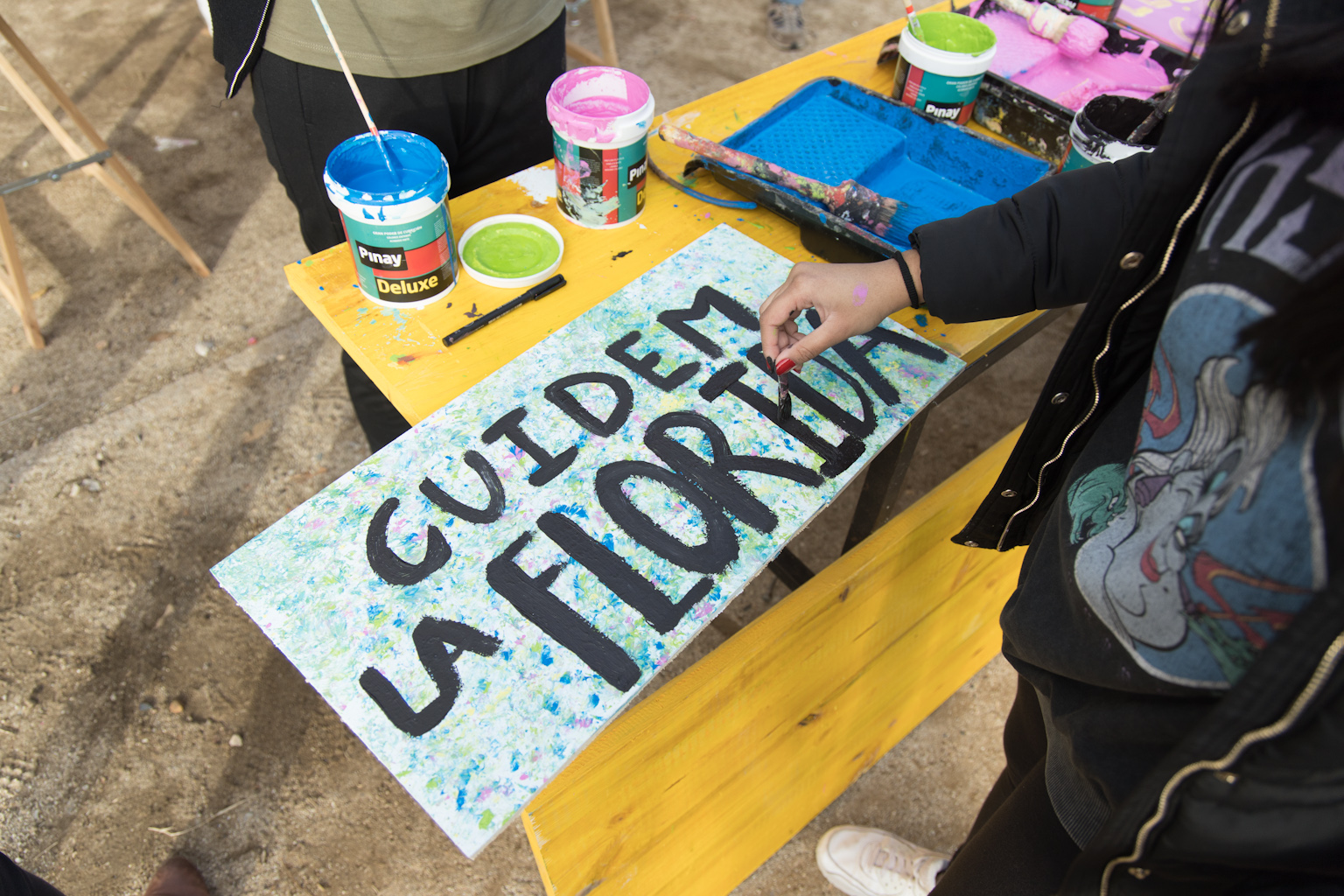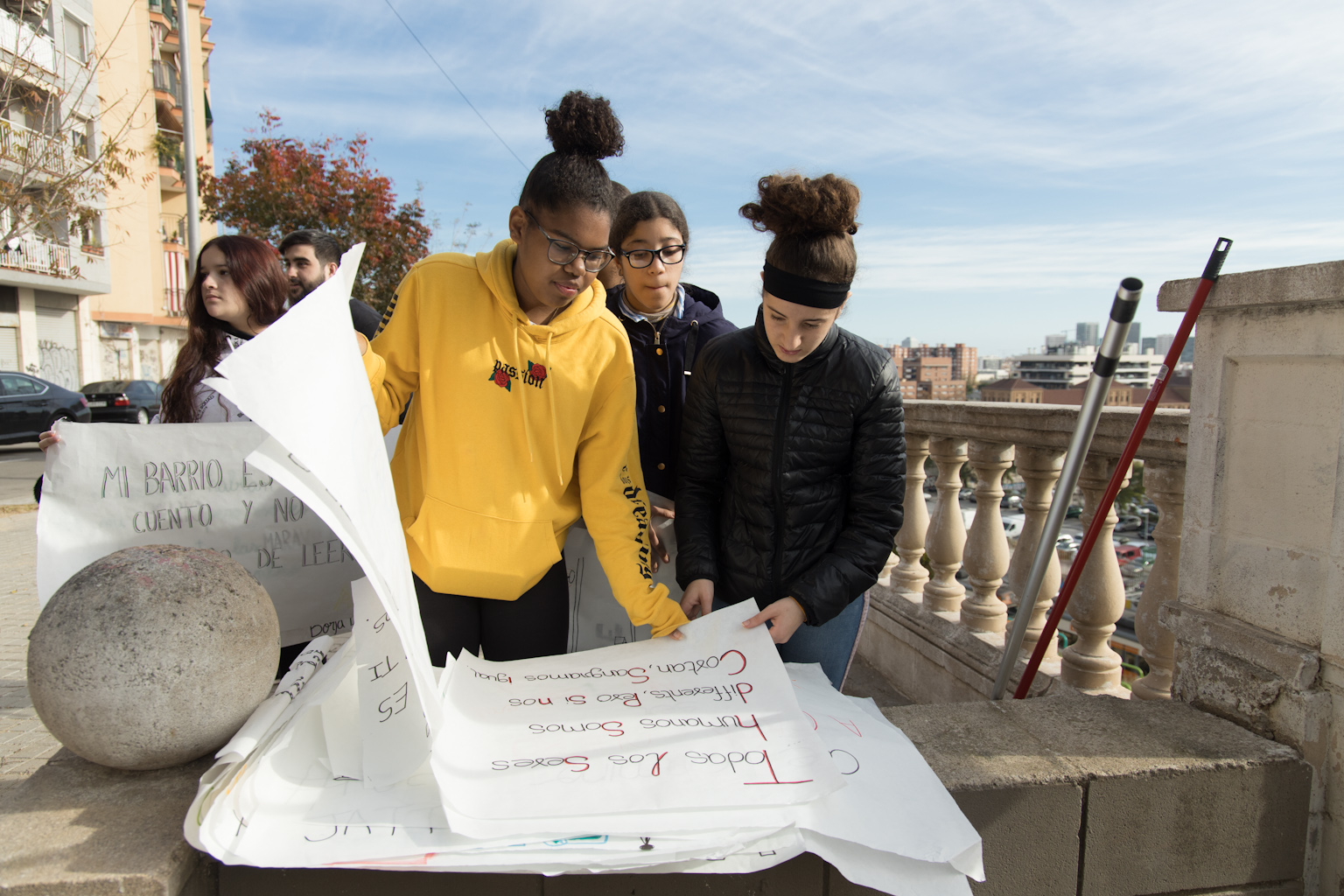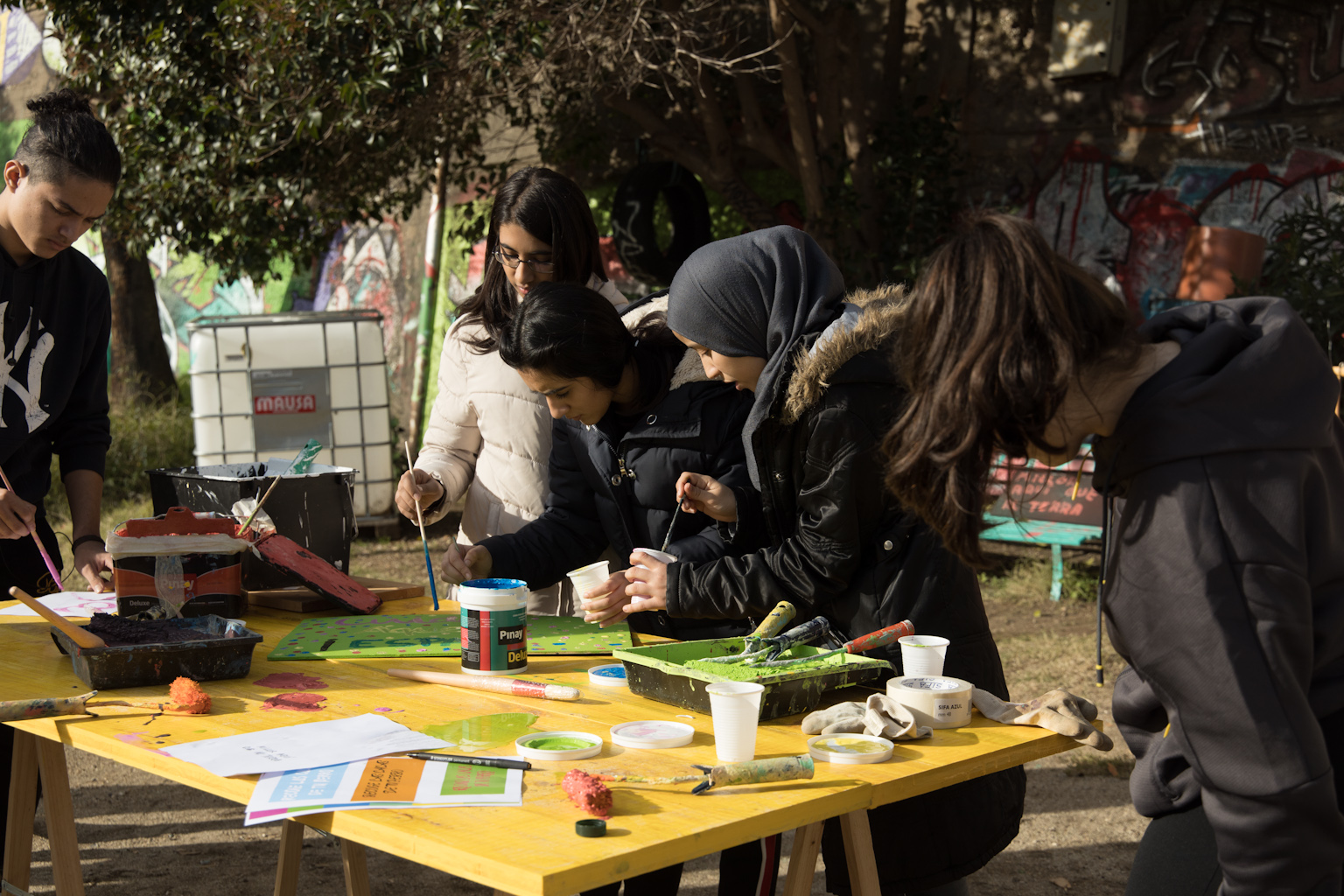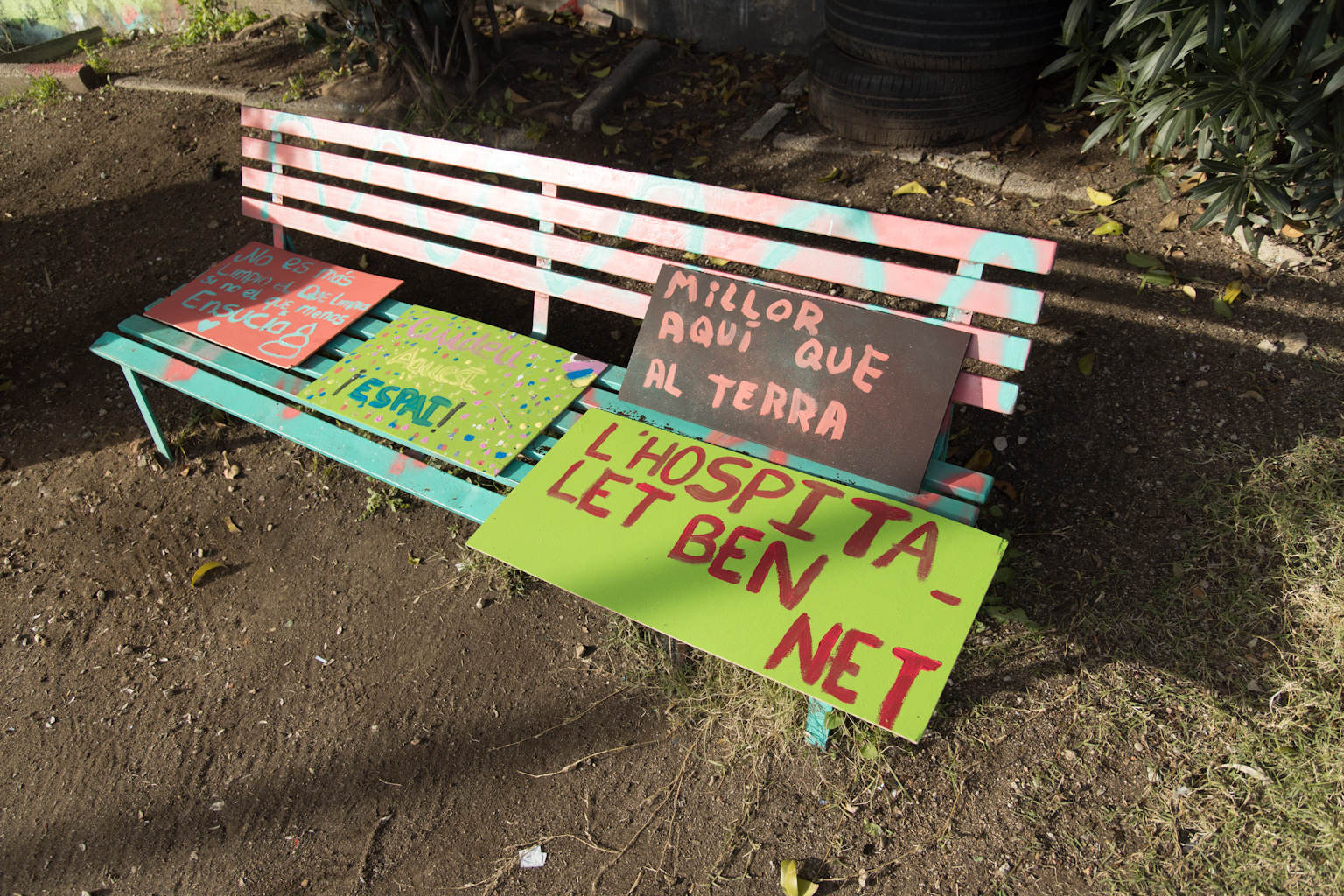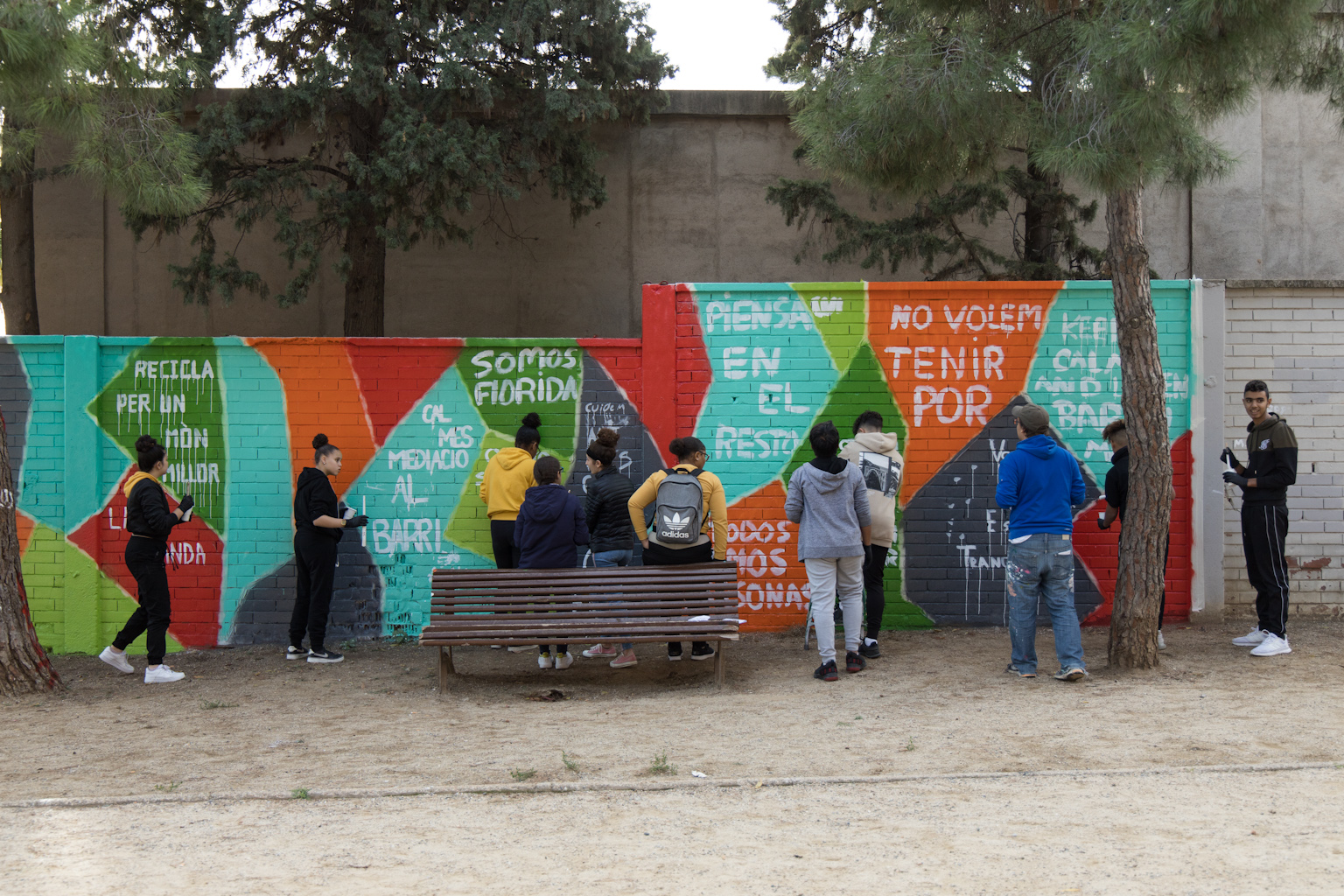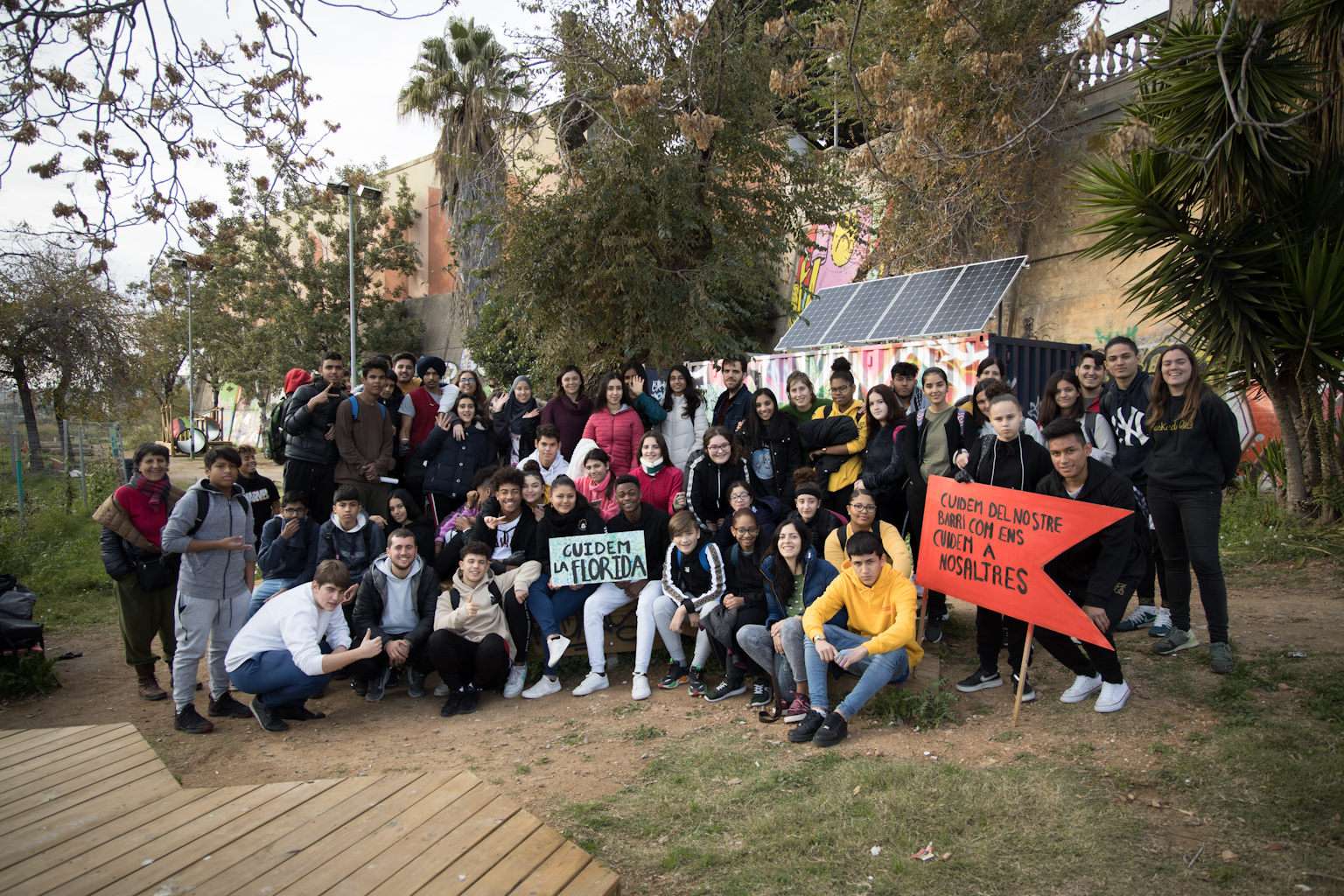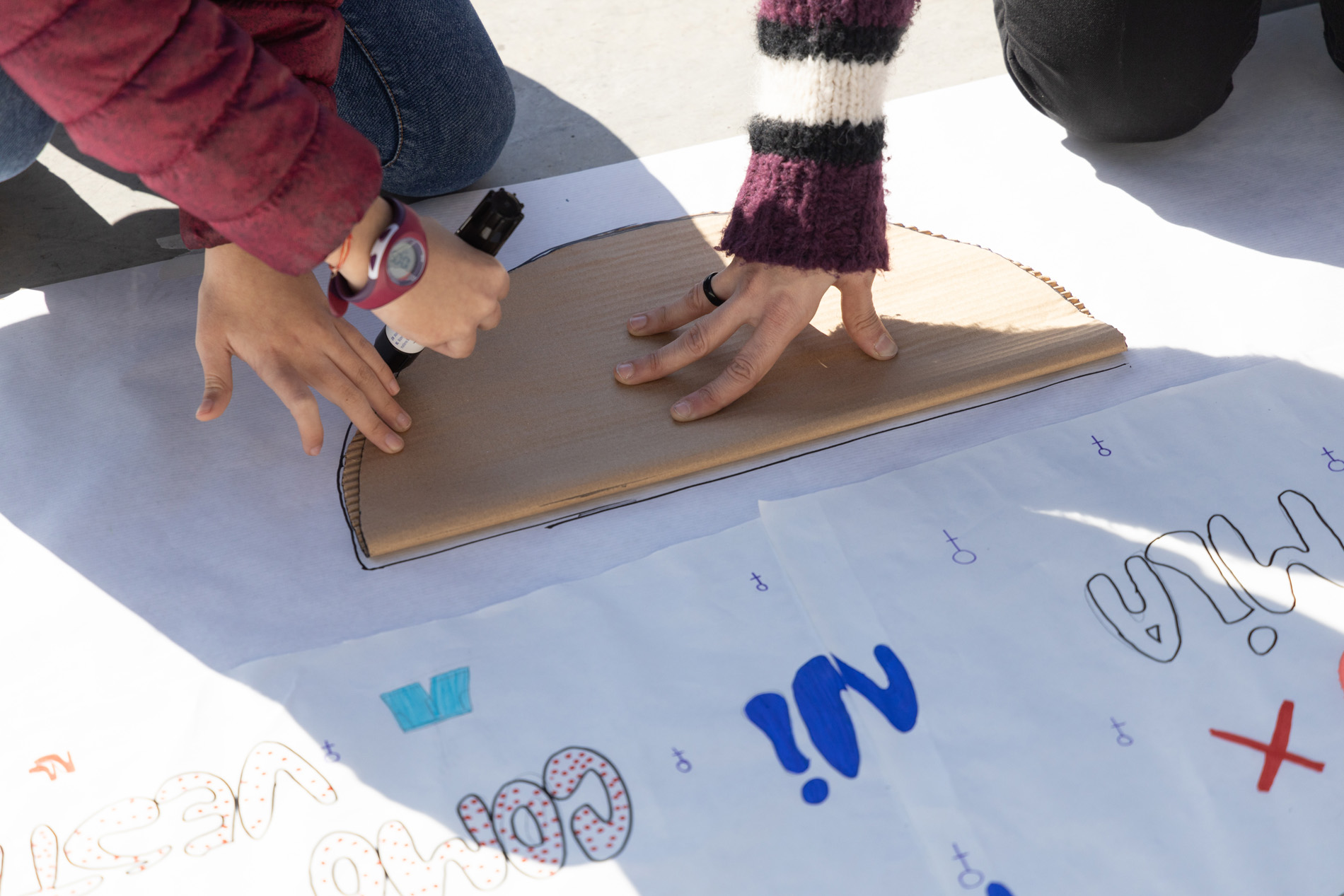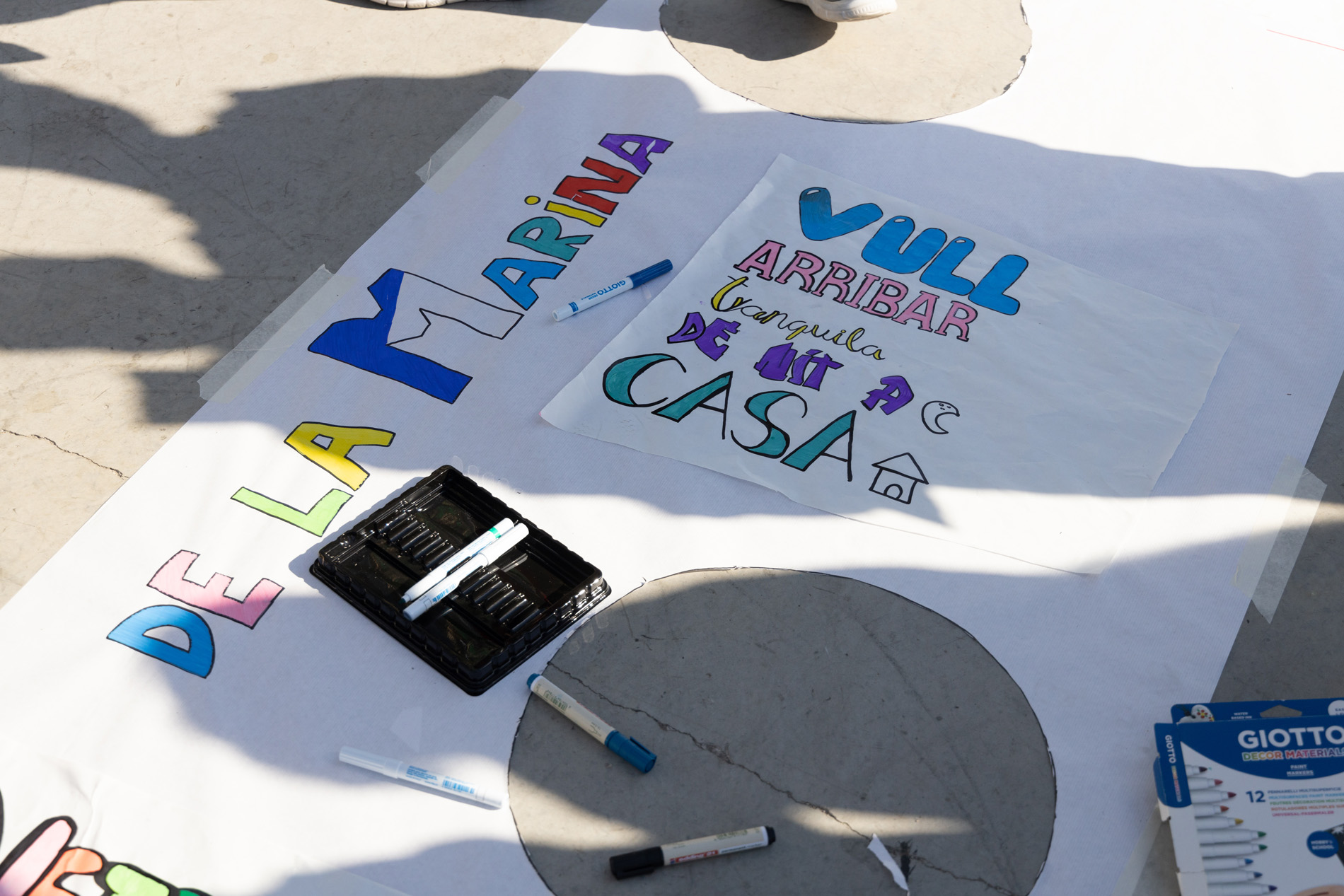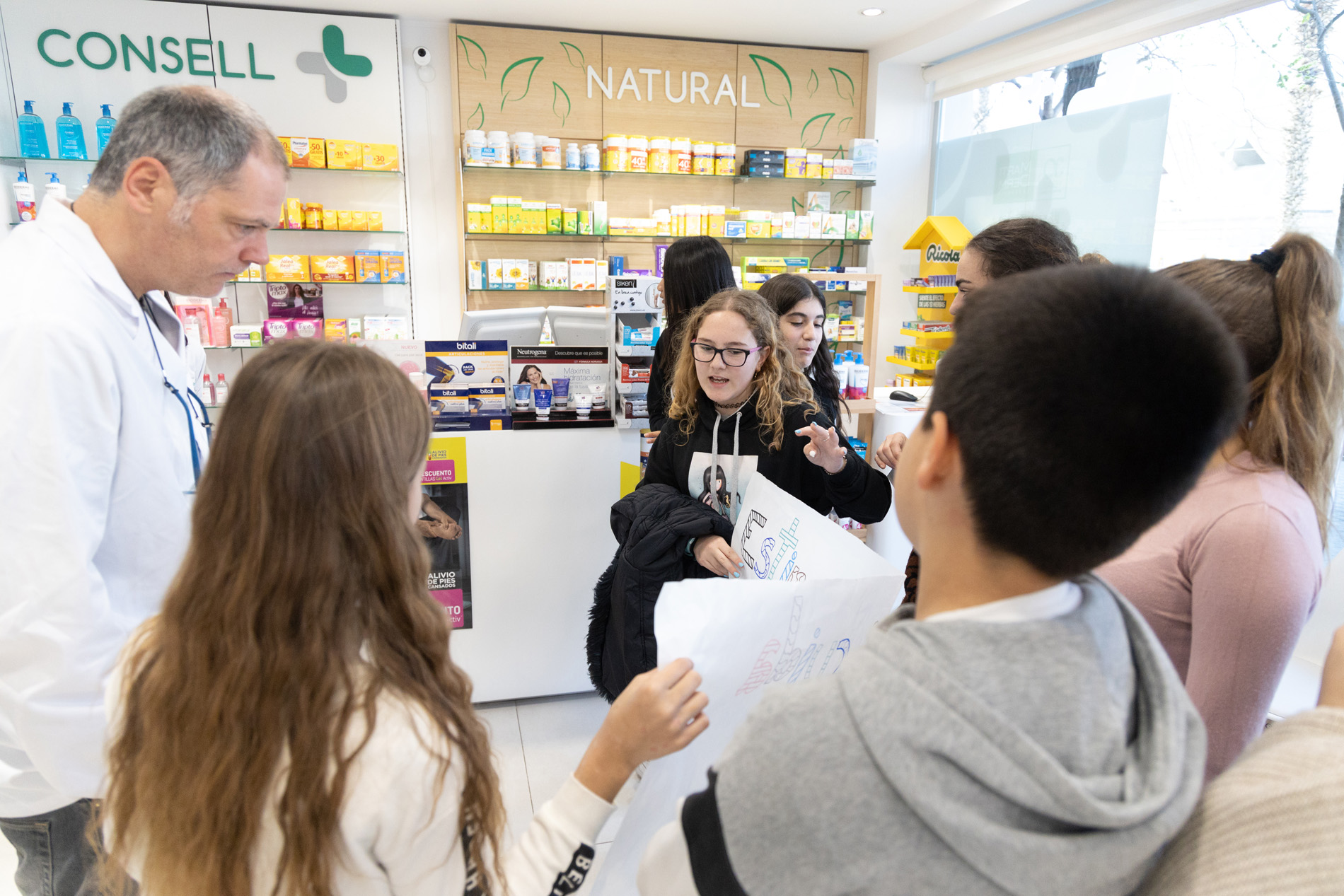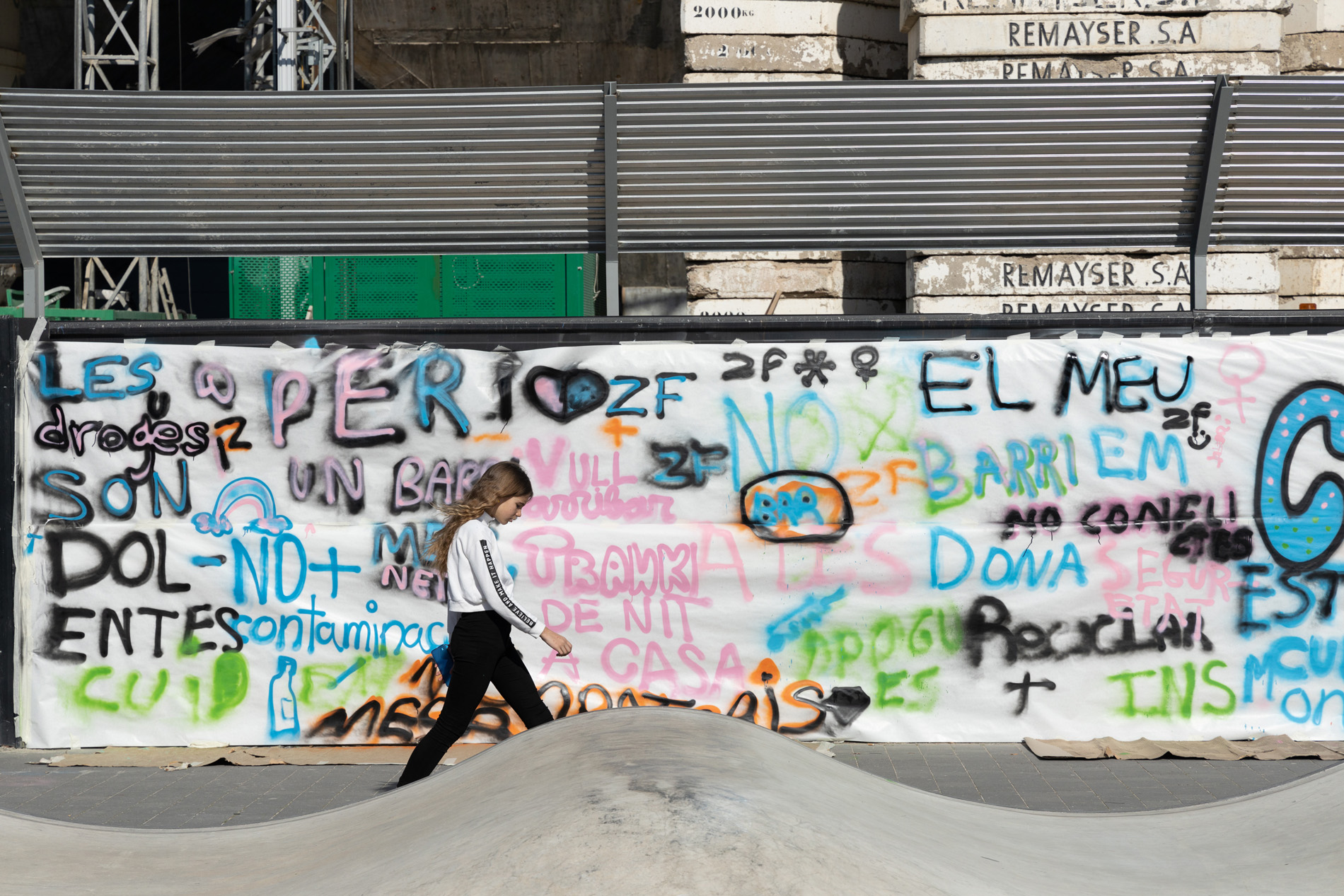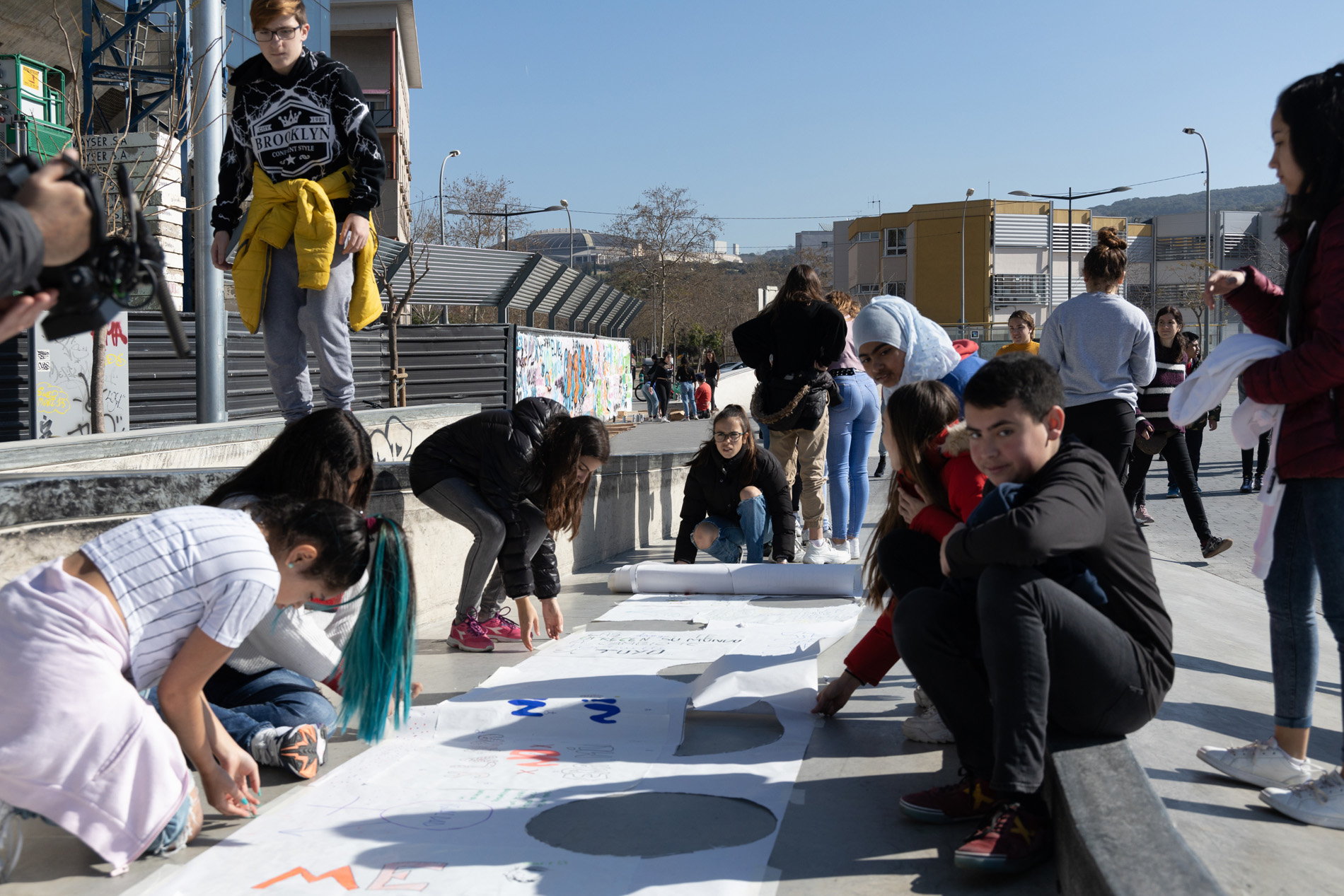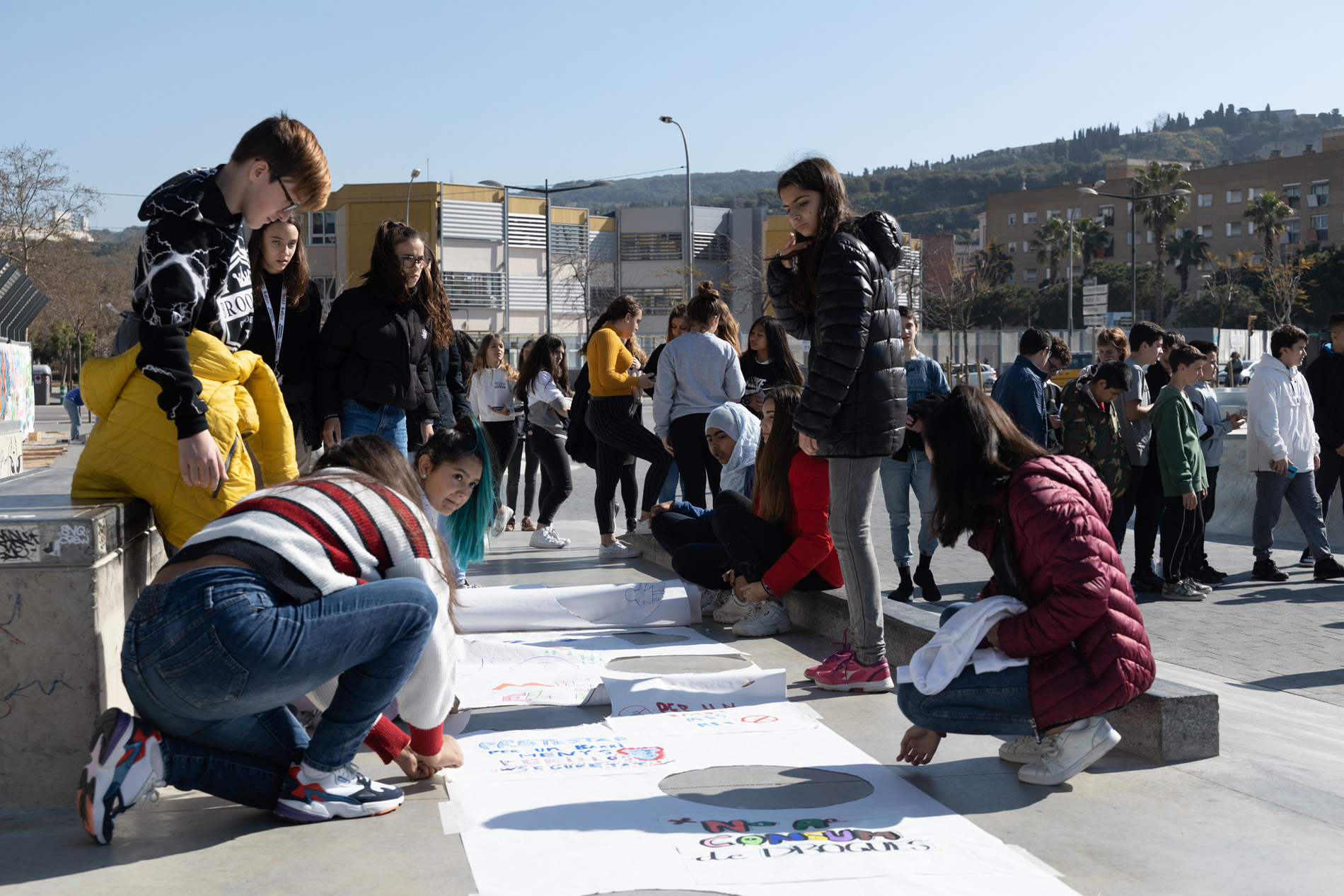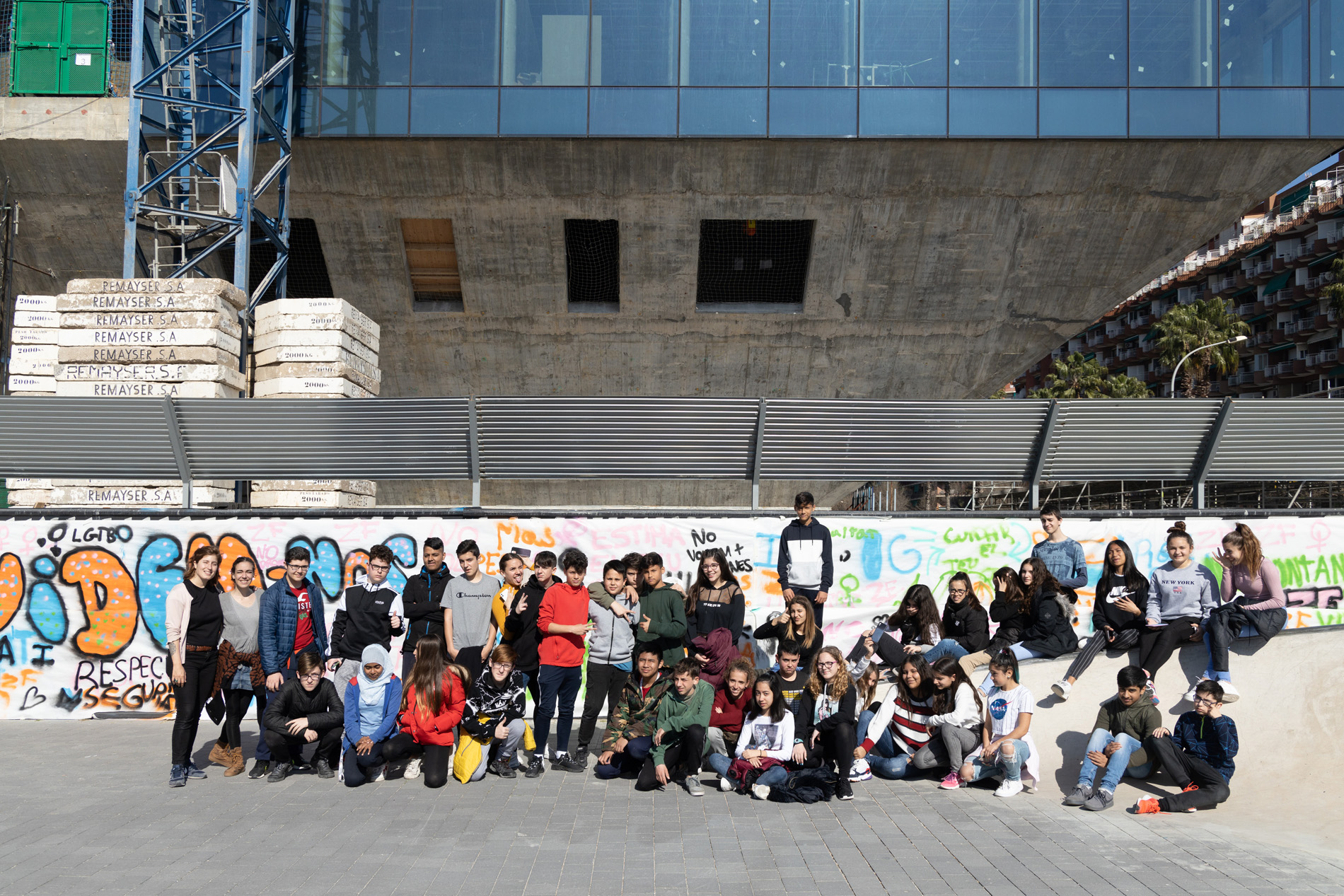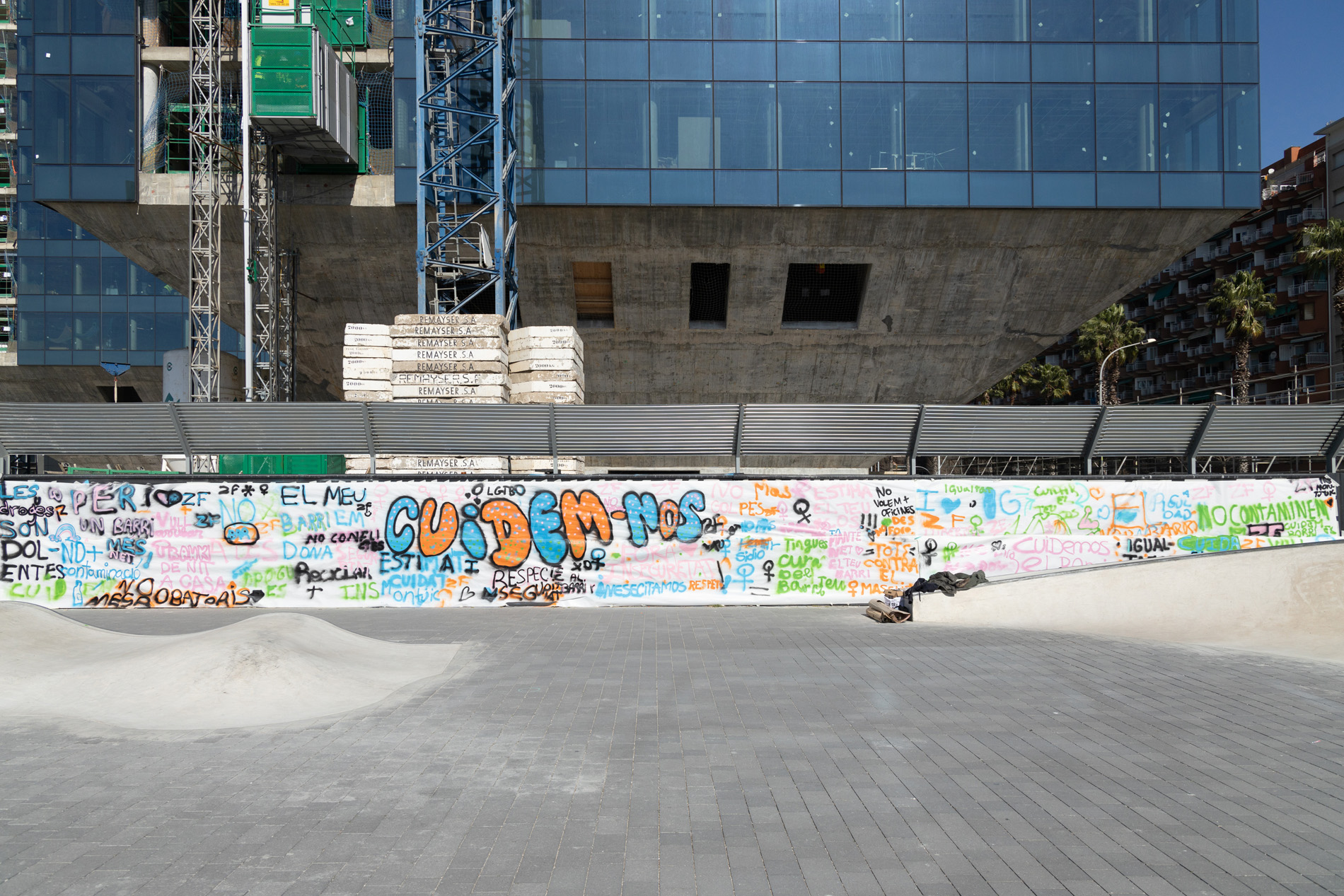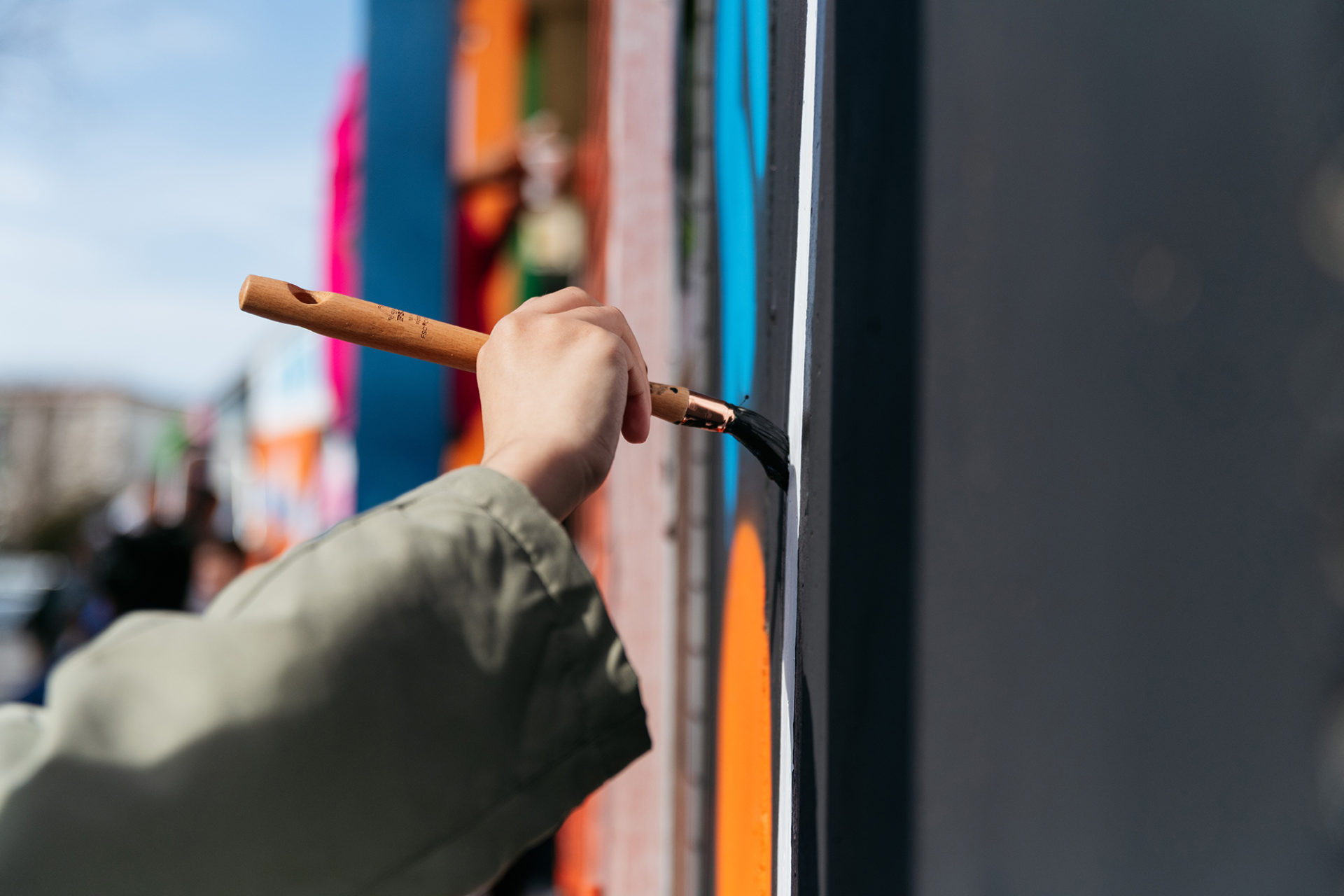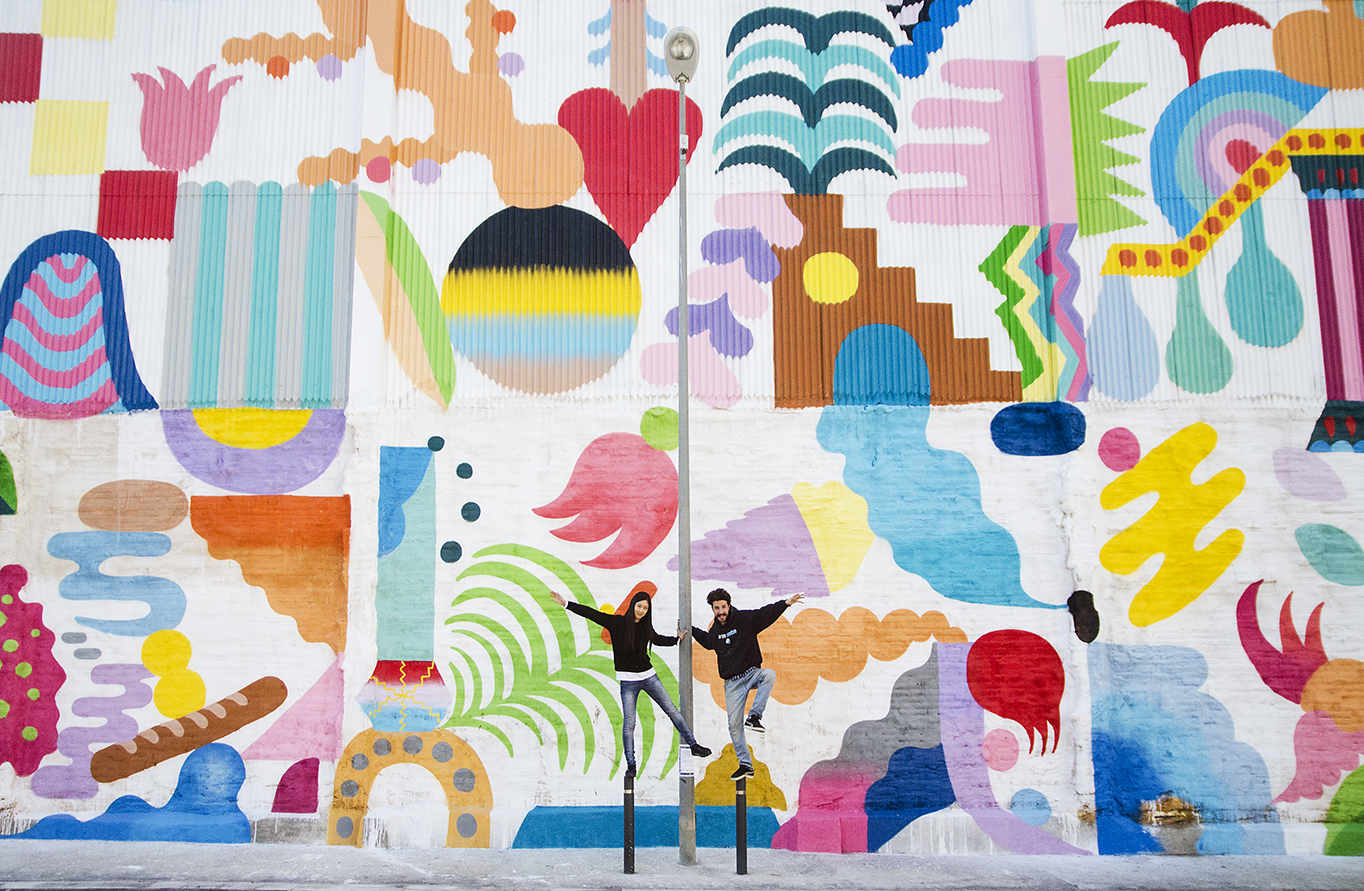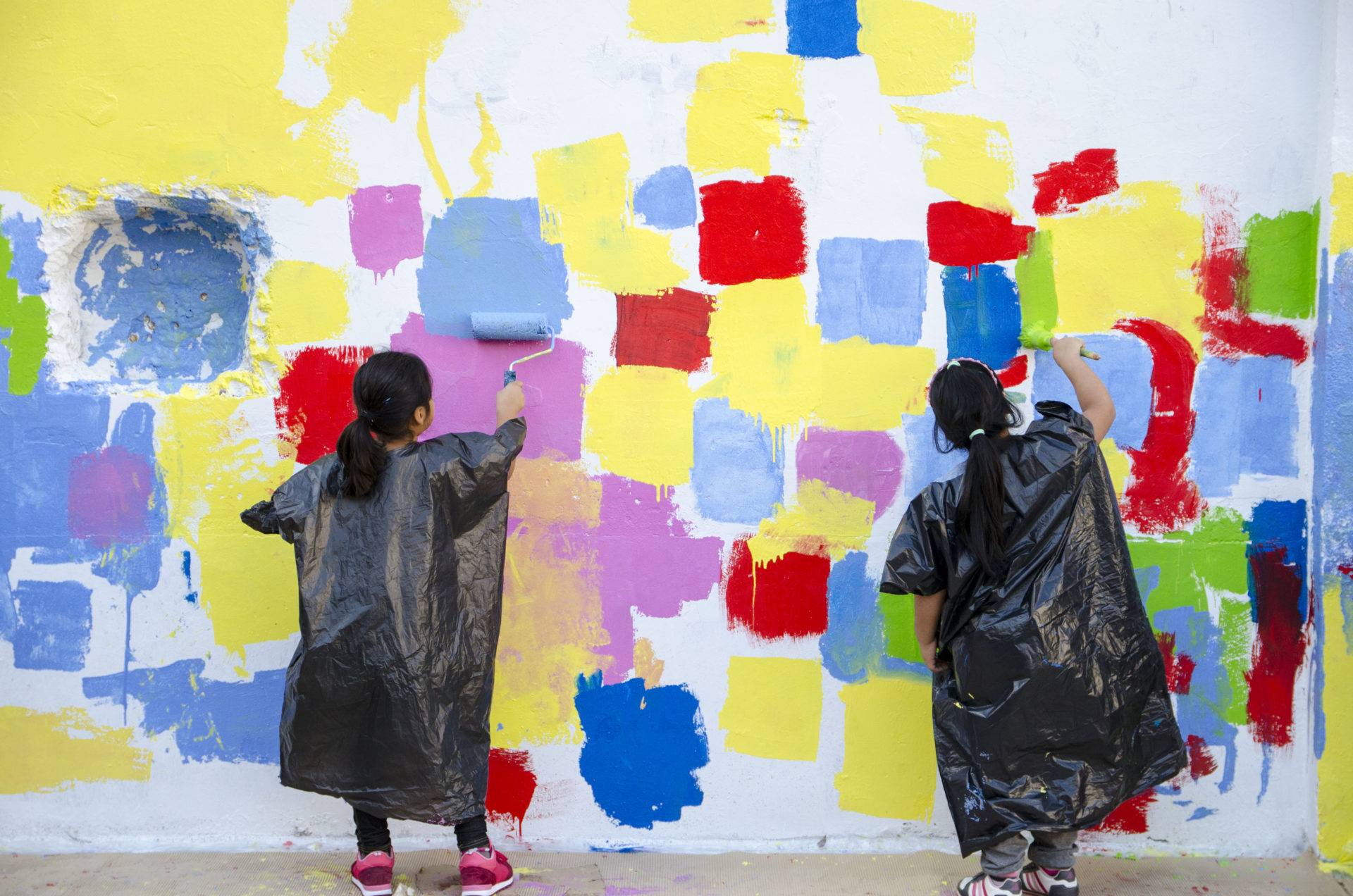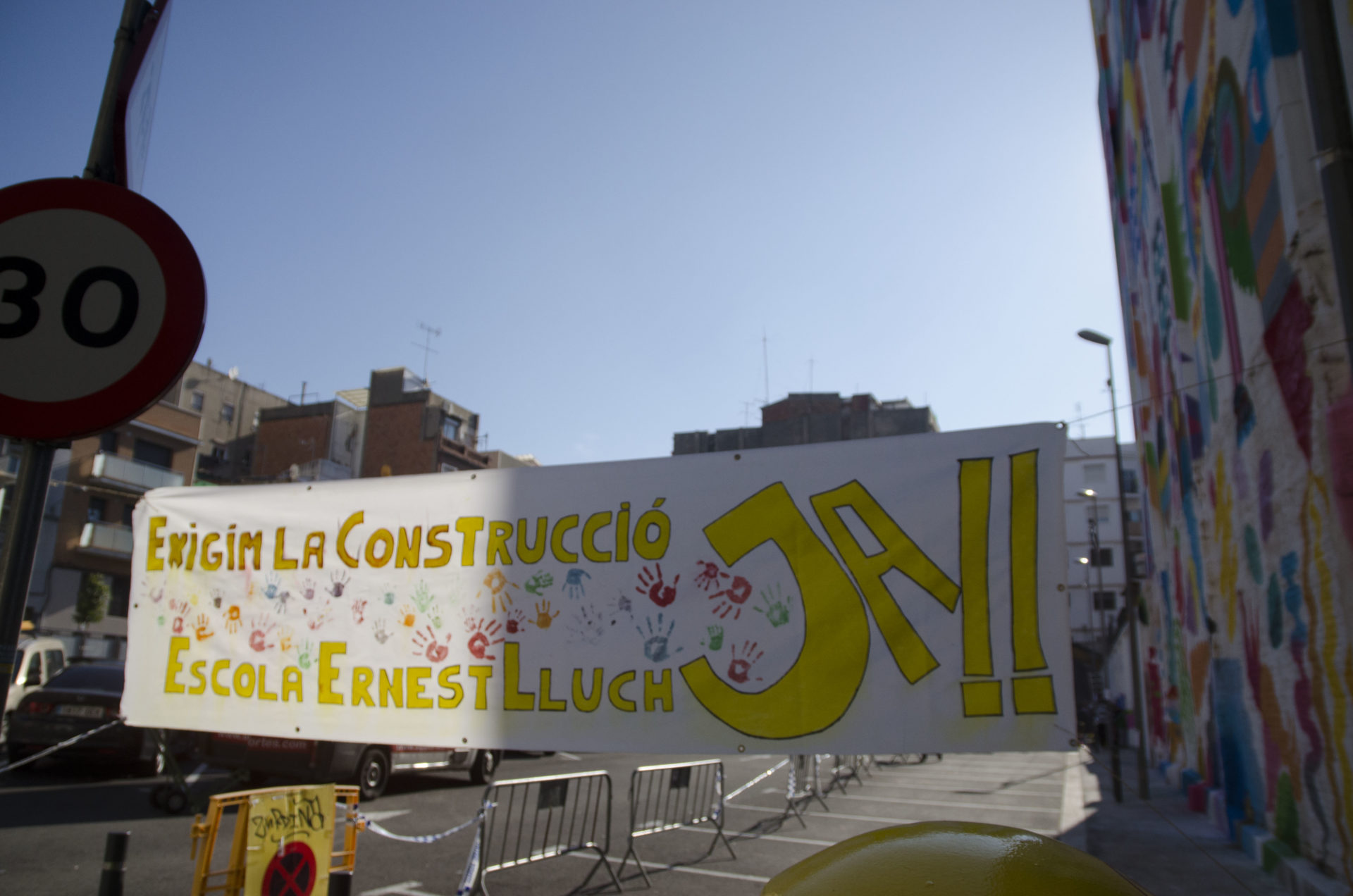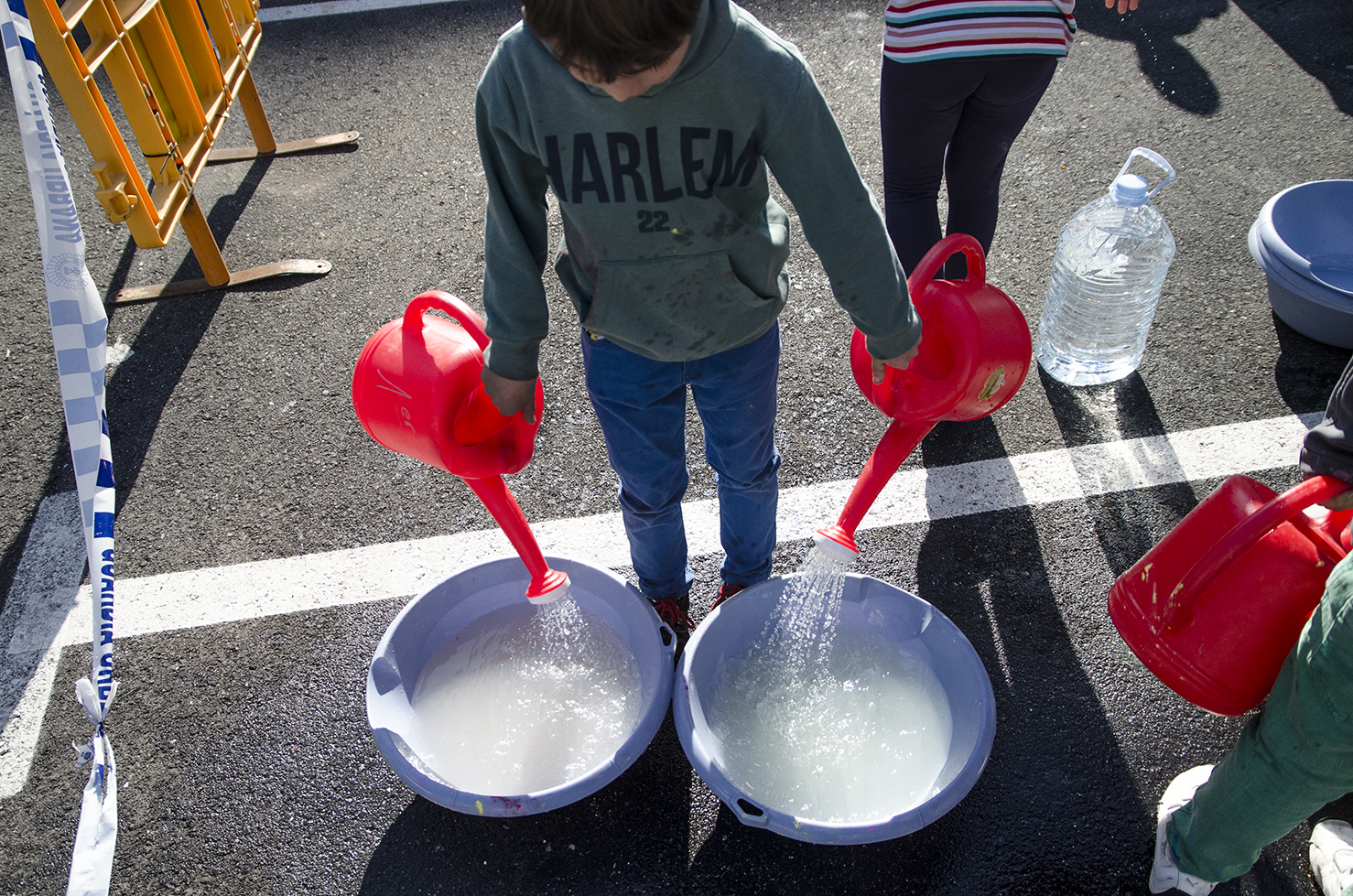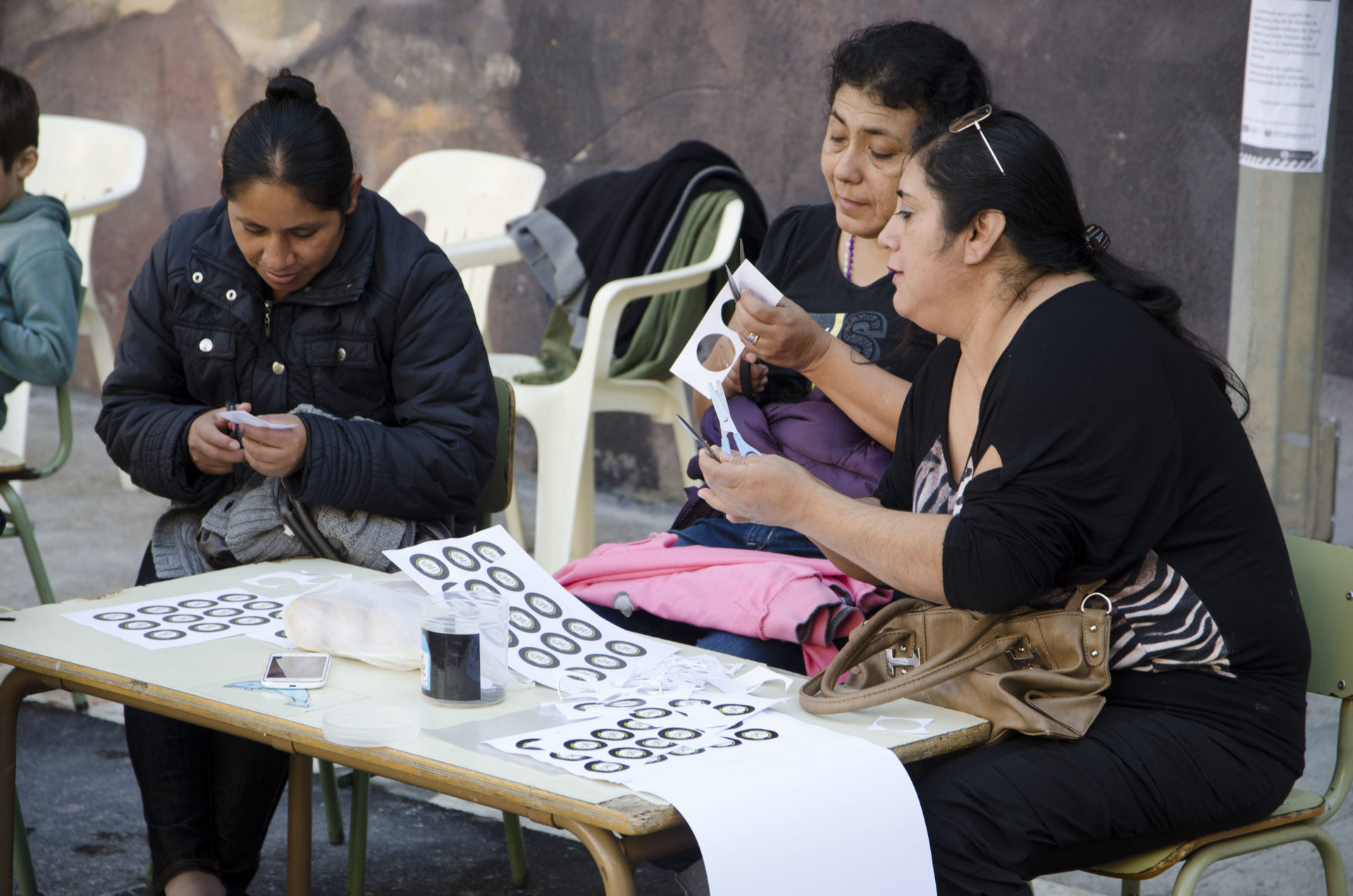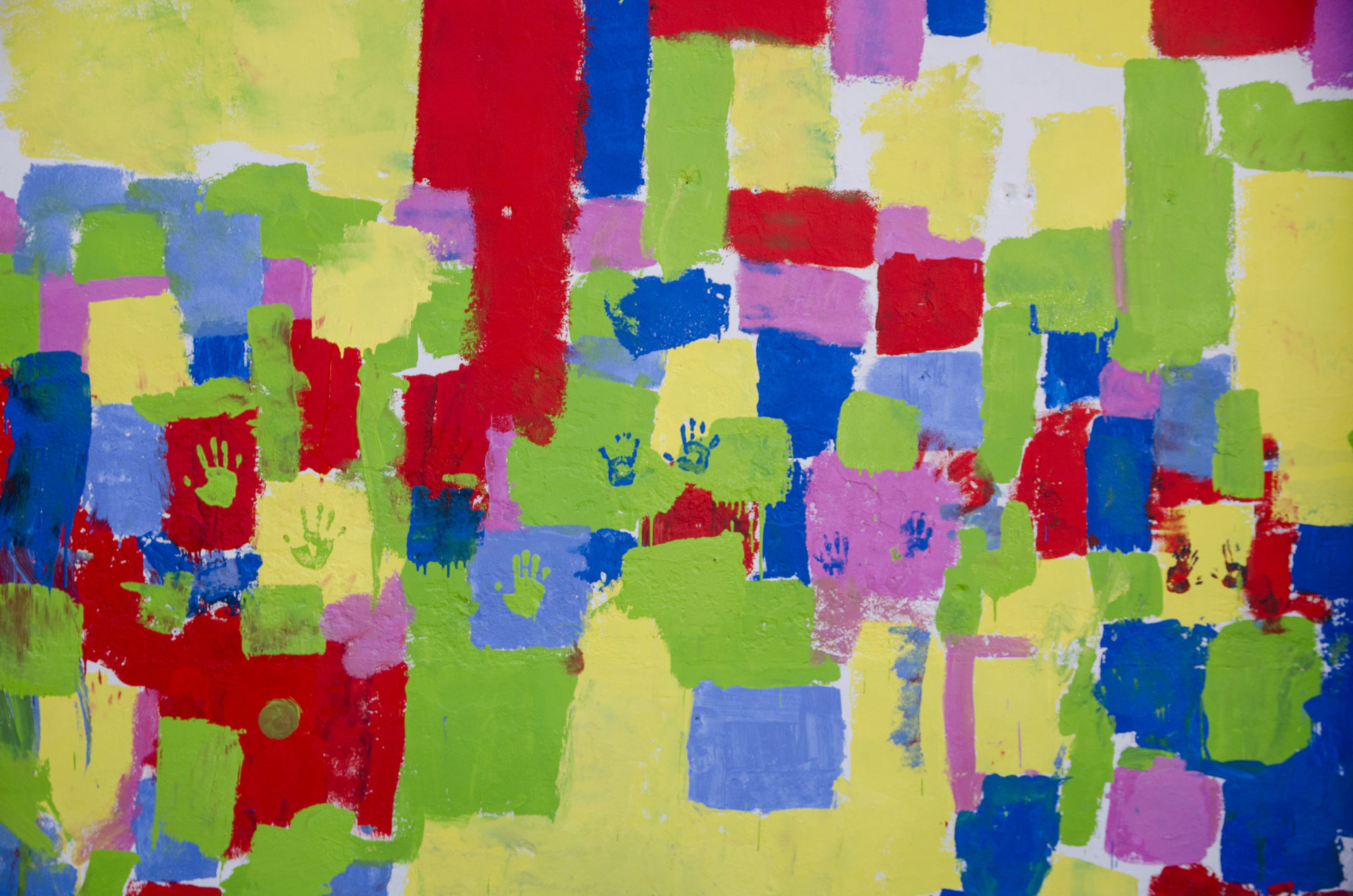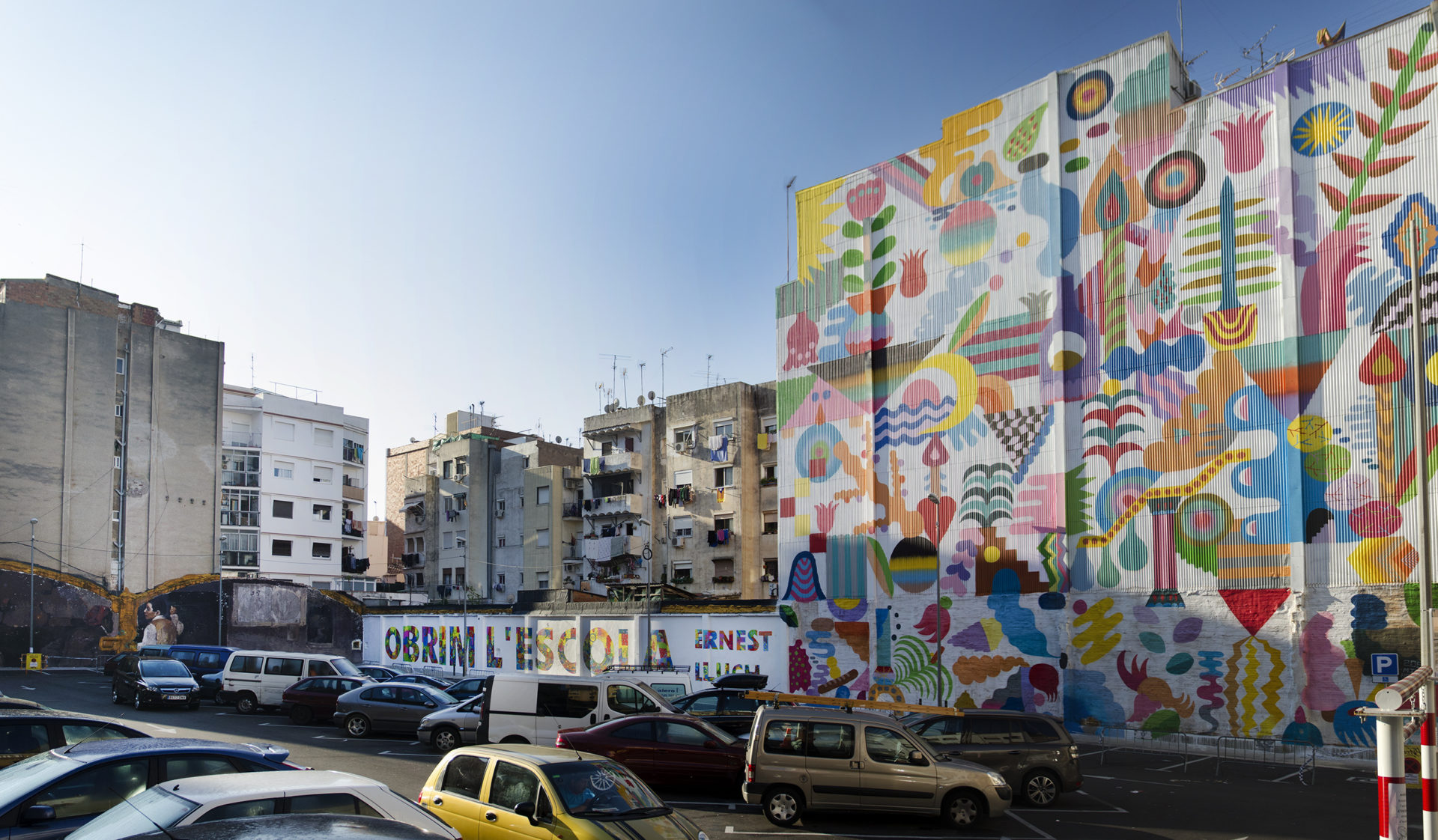Artivism
The artivism projects of the Contorno Urbano Foundation start 2015 with the collaboration with the Difusor association and the Ernest Lluch school to claim the construction of the school by the Government of Catalonia. Subsequently, we have carried out protest mural art projects with educational centers or agents from a specific neighborhood.
In 2019 and 2020 we have been part of the Akwaba Foundation’s “Com vivim? Convivim” project. You can see more information about this great project at this link. Within this project, together with Akwaba and three educational centers, we carried out a process of analysis, design and execution of small ephemeral interventions that served to reflect on our environment, claim and produce positive change.
Artivism is an important part of the foundation’s urban regeneration processes, whether with a vocation to carry out a permanent or temporary action that helps us reflect and analyze the territory.
Objectives and considerations
– Produce interventions in the public space that can claim with positive messages changes in the city, society, etc.
– Establish a methodological framework that allows us to accommodate this type of intervention in very different age groups and backgrounds.
– Analyze well the environment to intervene with the main group of the action to identify what they would like to claim. Establish a theoretical framework with which to justify these interventions halfway between community art and activism.
– Educate, train and empower participants to analyze the environment and develop a proposal appropriate to their abilities and to which they want to transmit.
Analysis phase
In this phase we analyze the territory to intervene to find out what are its pathologies, local neighborhood claims, etc. “What would we change in the neighborhood? What we like and what not? What message would you send to all your neighbors?” These are some of the necessary questions that the participant should ask himself when identifying the topic we want to talk about.
This analysis is often done exploring the territory and with sessions of dialogue and debate. It is in this phase that we identify the main concerns and demands that we will have to reach the rest of the community.
Design phase
In the design phase we collect all the proposals and claims that arose in the analysis phase and think about how to convey this message. Sometimes this production will be an ephemeral element that helps reflect on the group that has carried out the action and in the neighborhood. On other occasions where appropriate, a permanent intervention of public or community art can be carried out to act as a speaker for the claim that we have previously detected.
In any of the two cases, the design is carried out together and in this phase the necessary material is produced for the implementation of the artivism action.
Execution phase
In the last phase of the project we produce the action or actions previously designed by the groups. These actions are adapted to the territory and the message and can go from a public mural on a pasted poster, signaling the flaws in the public space of a neighborhood to any other action that has been considered appropriate to convey this message.
We understand that artivism does not have a defined form and each claim and project needs a different means to get its message across.
Featured actions
Eduard Fontseré Institute
First action of the Akwaba Foundation “Com vivim? Convivim” project in which we collaborate. The participating group was the 4th grade ESO students from the center and the area to be analyzed in the La Florida neighborhood. We carried out 4 simultaneous actions within the project: Analysis of flaws and misuse of public space, painted posters for the proper use and care of the Matacavalls park, painted a “wall of claims” and anti-advertising action where we hooked posters with the claims of the analysis on the announcements and commercial advertising of the neighborhood.
Ernest Lluch school
The second action of the collaboration with Akwaba took place in the Collblanc – Torrassa neighborhood with the Ernest Lluch school and the 6th grade students. With the students, they analyzed the neighborhood, which was severely punished by the population density and the problems of coexistence, the lack of public space, etc. As an action we decided to recover a residual space to transform it into a game space. The action consisted of designing and painting games on the ground, a small mural to claim the need for more green and nature in the city, and the posting of posters with children’s demands for the improvement of the neighborhood.
Montjuïc Institute
With the Montjuïc institute we carry out the third and last collaboration with the Akwaba Foundation. This Institute is located very close to the Barcelona industrial port and in an environment of high complexity and with students at high risk of social exclusion. The analysis of the territory reveals some of the concerns of the young participants of 1st of the E.S.O. Among the reflections that emerged, the construction of new offices, drug consumption and trafficking, the lack of leisure and opportunities in the neighborhood stood out.
In order to get our message across, we put up a protest banner where we can put our messages on the fence of the new office building under construction, adjacent to the neighborhood skate park, a transit area and where young people stop by.
Maria Aurèlia Capmany Institute
With the Maria Aurèlia Capmany institute in Cornellà we worked to make a community mural that would speak of the San Ildefonso neighborhood. In this case we have the artistic direction of the artist RO LEDESMA. The main façade of the center is very visible from the outside and was considered a good space where to make demands of the young people of 4th of ESO of the institute.
In the analysis of the neighborhood we detected that the main demand is the multiculturalism of the neighborhood and we wanted to reflect on a message against racism and discrimination that young people themselves witness and suffer.
Ernest Lluch School, 2015
In 2015 we made a community mural and two reivindicating author murals for the opening of the Ernest Lluch school. This center had been in a precarious situation for years in school barracks waiting for the construction of the new school building by the Goverment of Catalonia. This newly created school due to the density of the neighborhood’s population suffered serious deficiencies in the conditions of its students with very limited space on the site where they are provisionally located.
With this claim we established a collaboration with the Difusor association within the Openwalls festival for the realization of the two author murals by Mohammed El Ghacham, Zosen and Mina.
The action was a success and gave much-needed visibility to the school project and the vindication of the parents and the teaching team.

